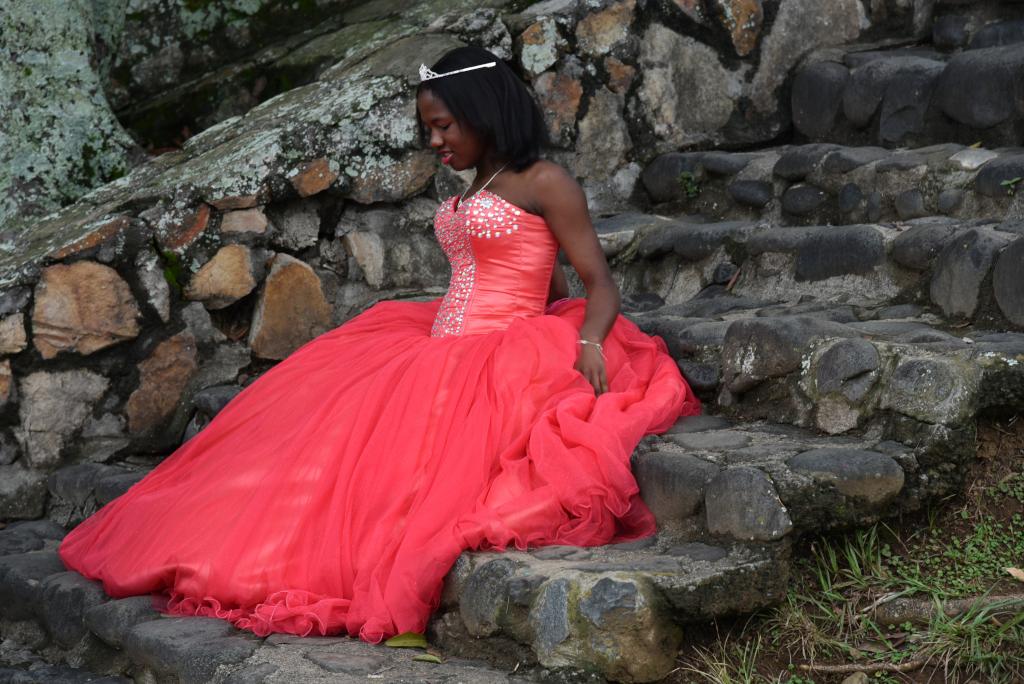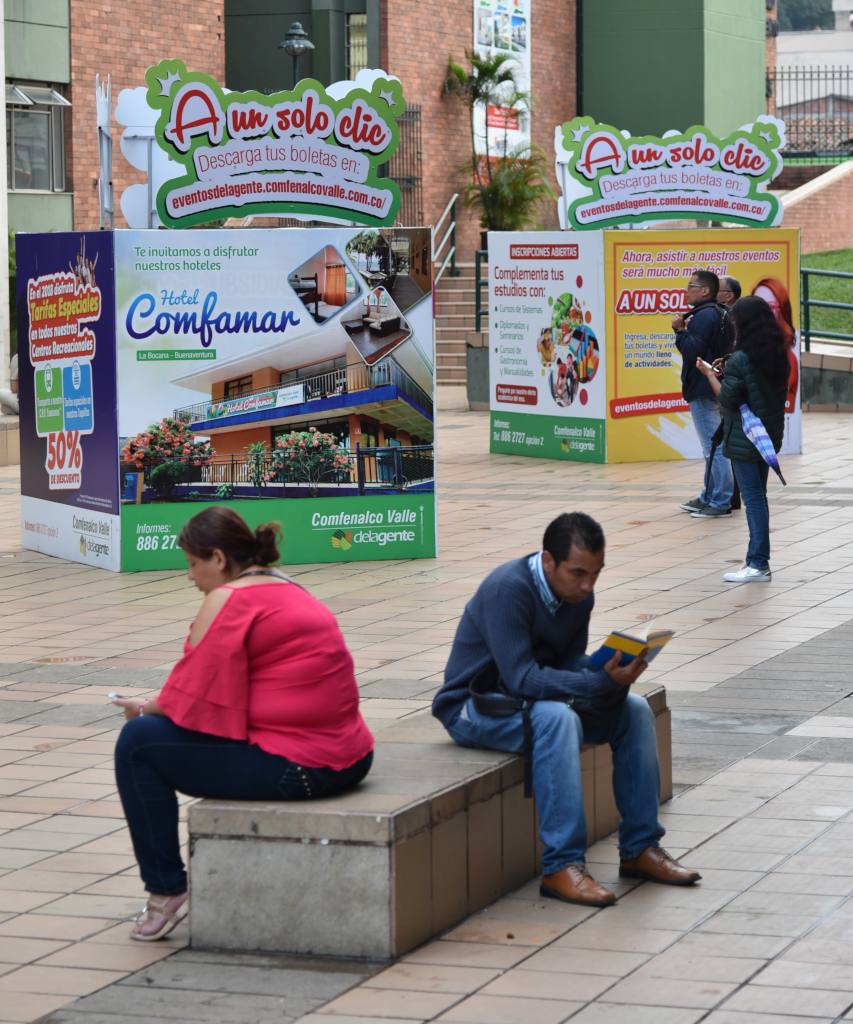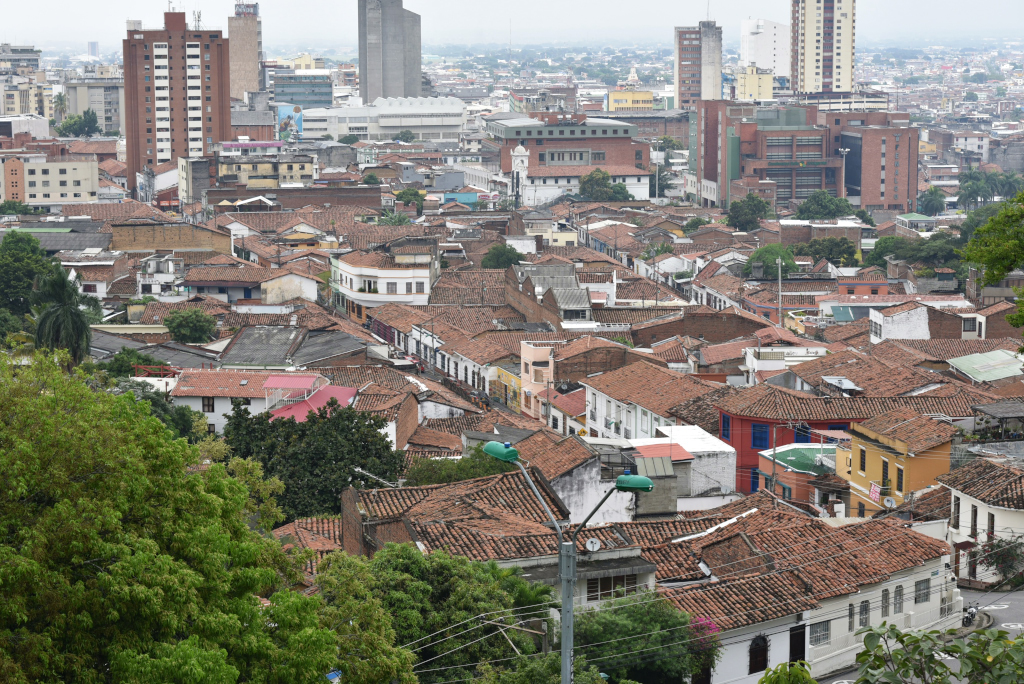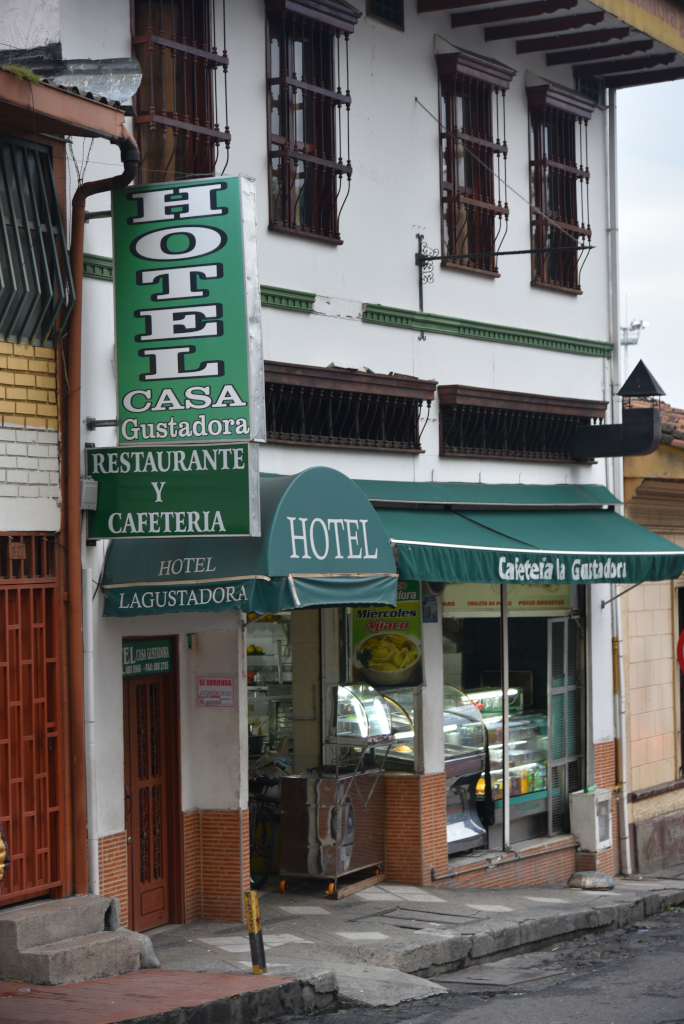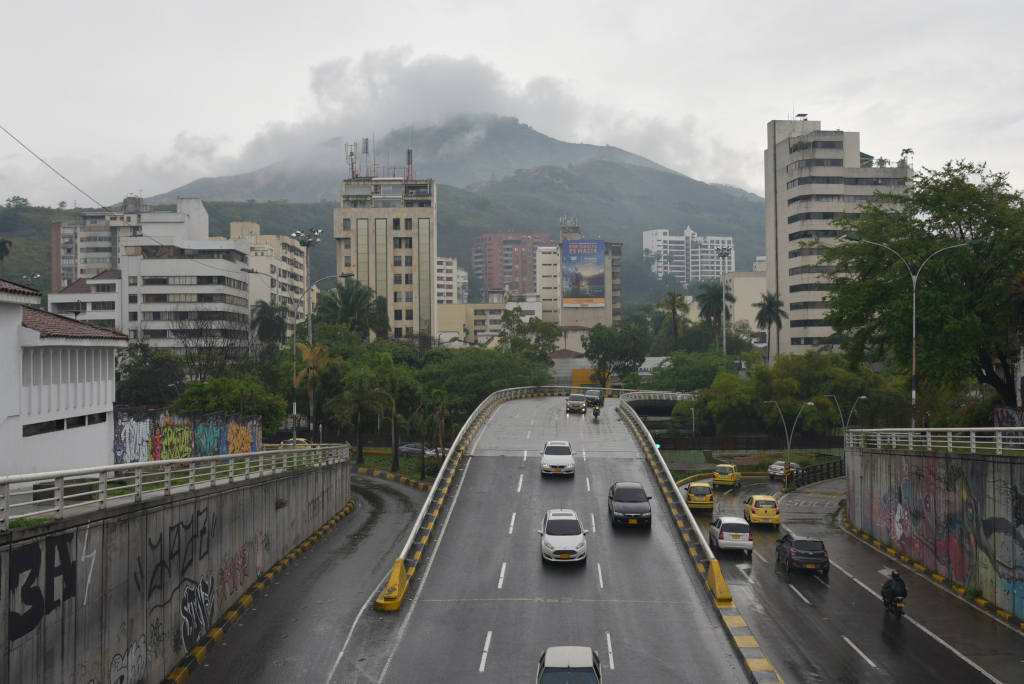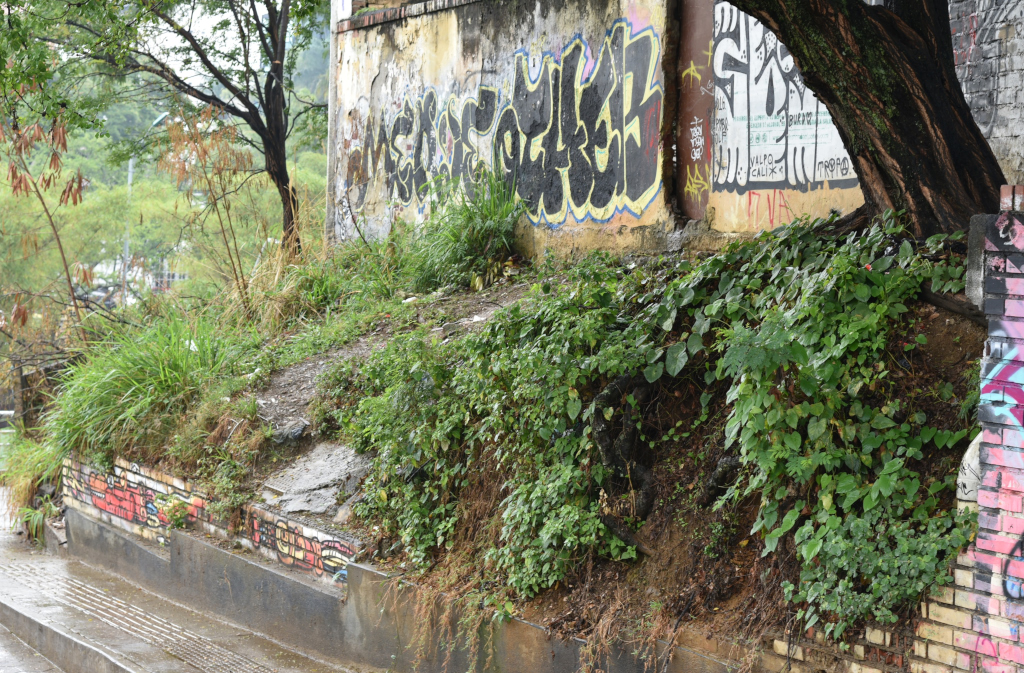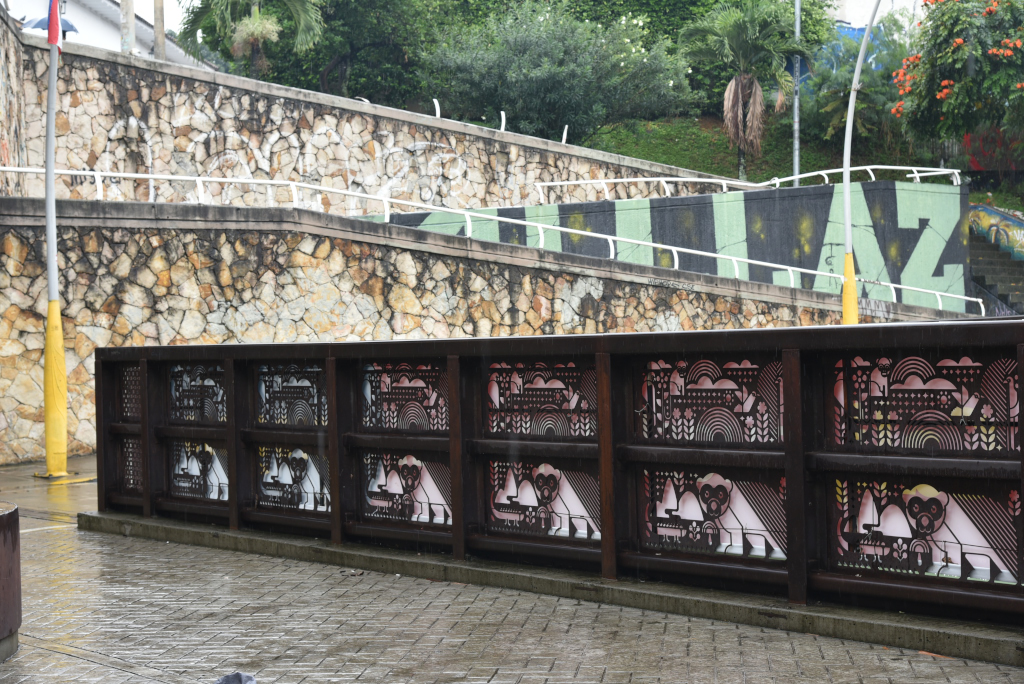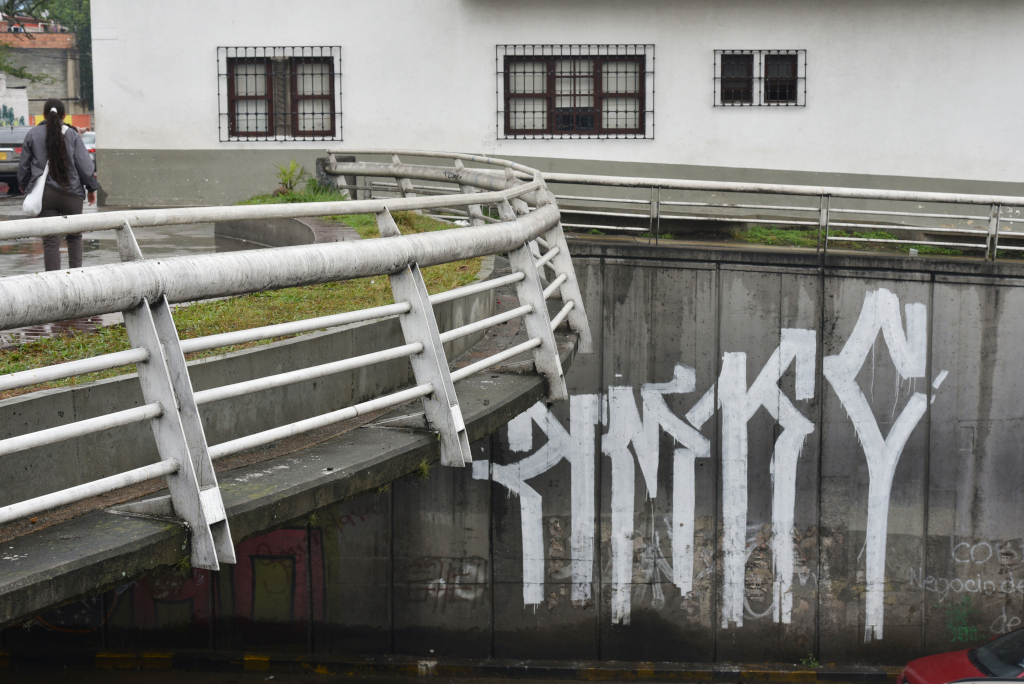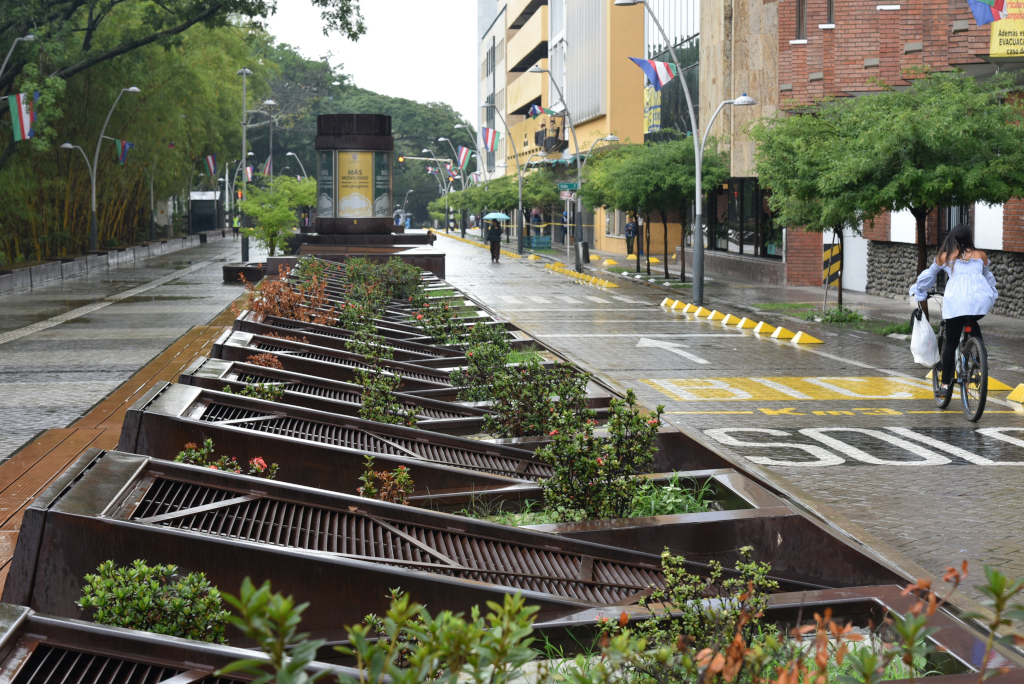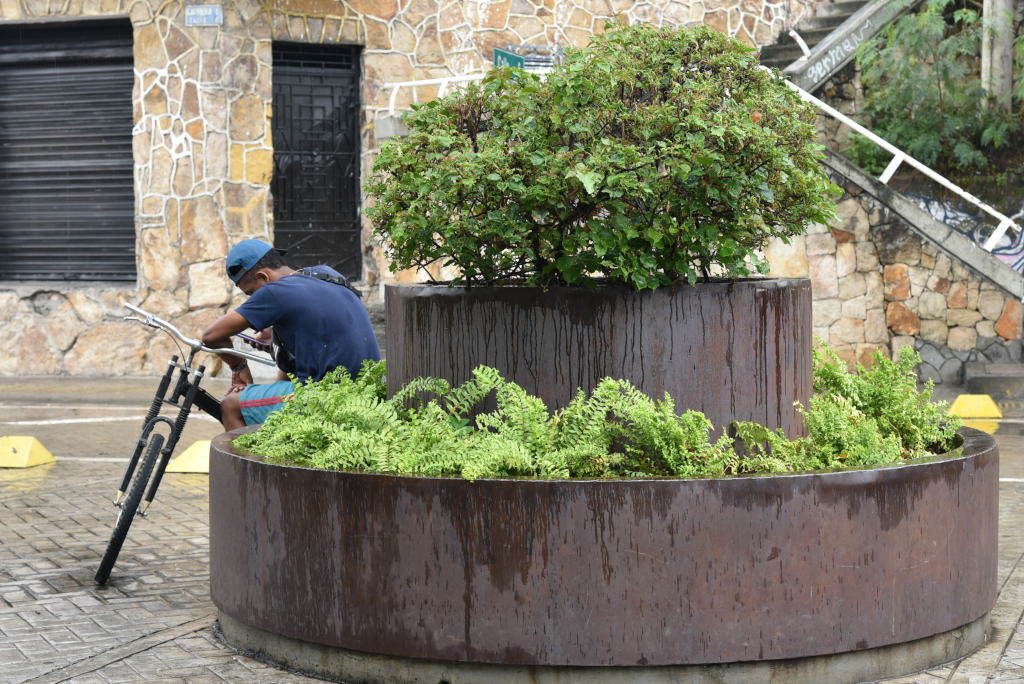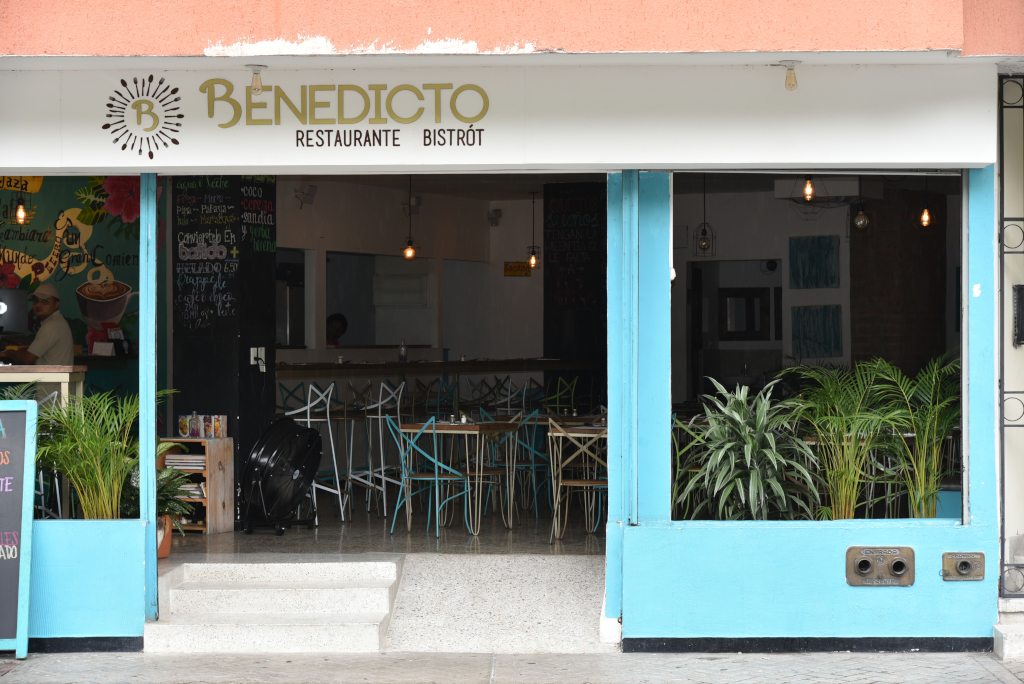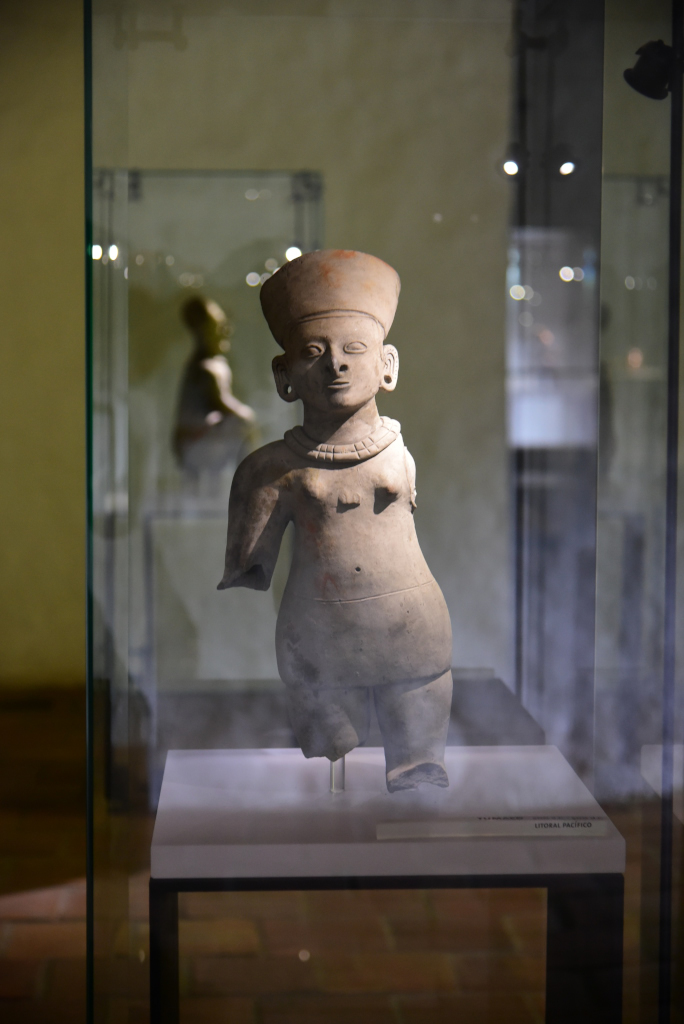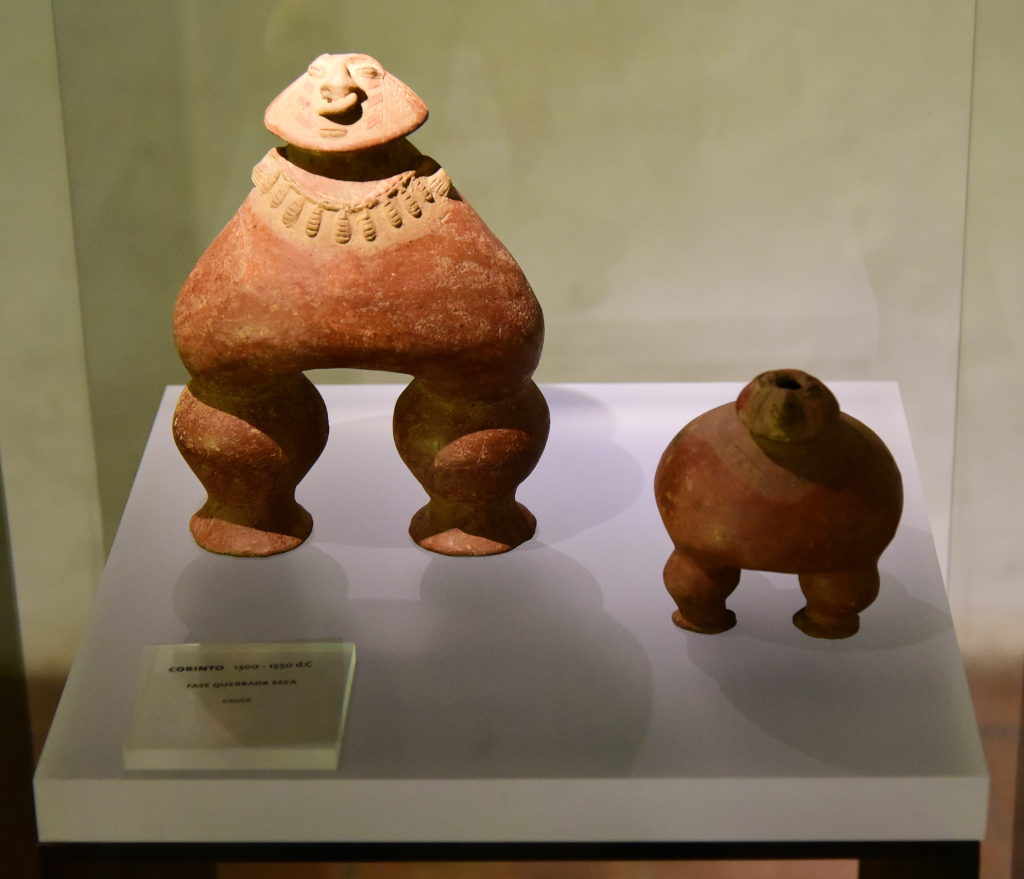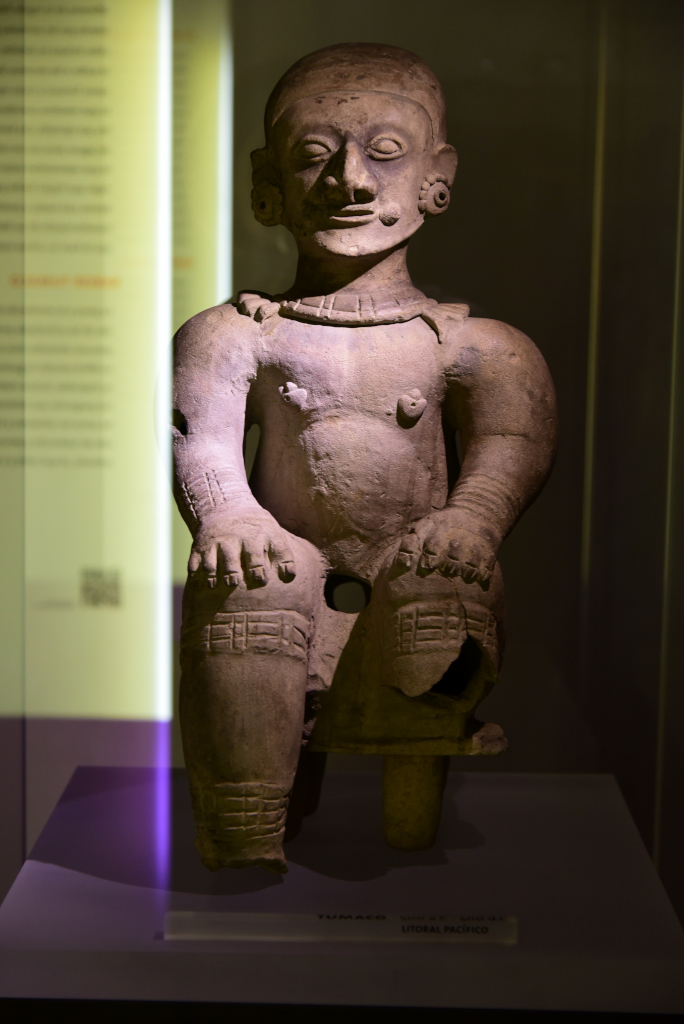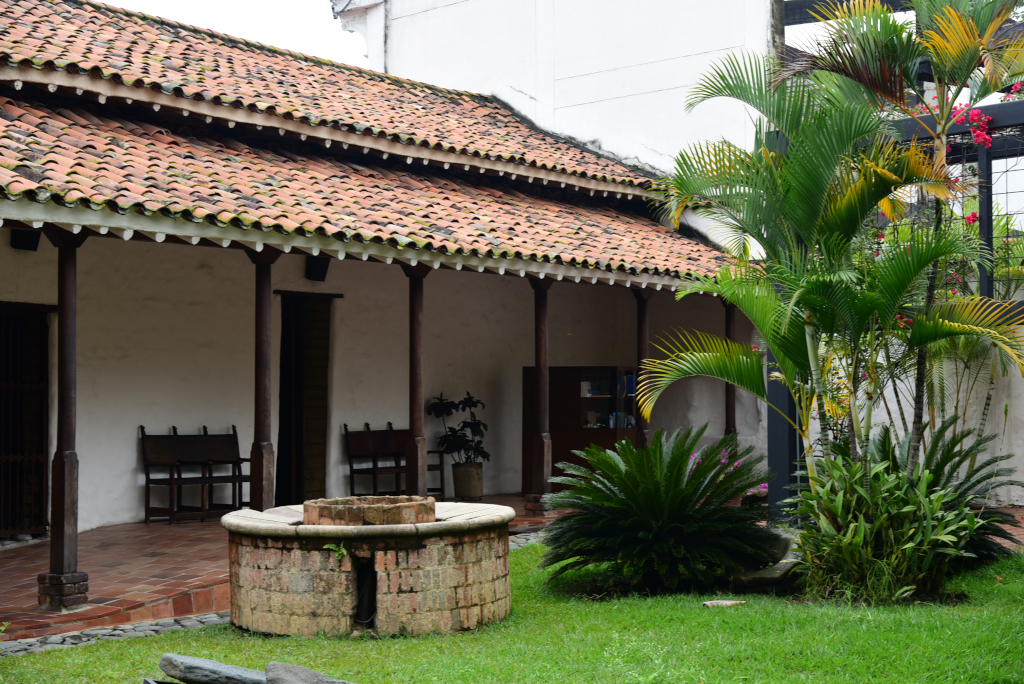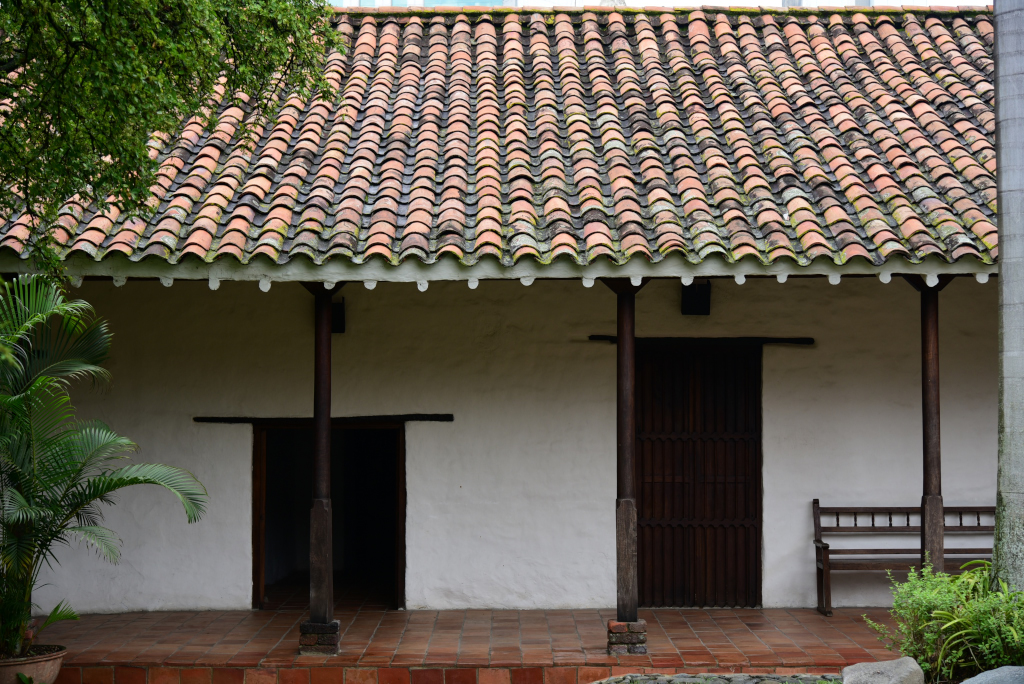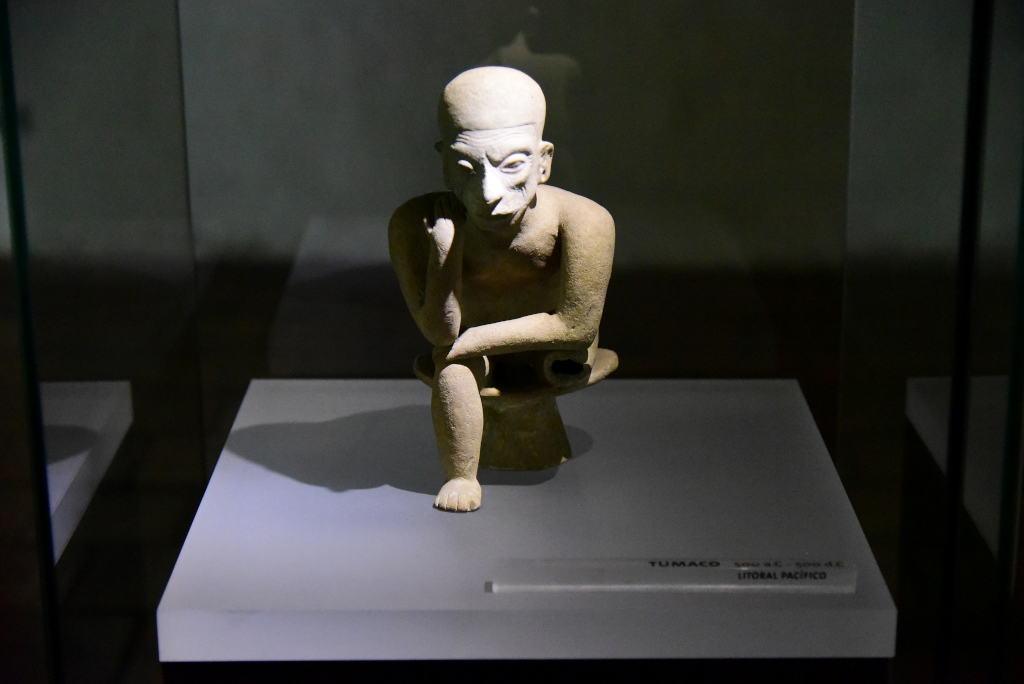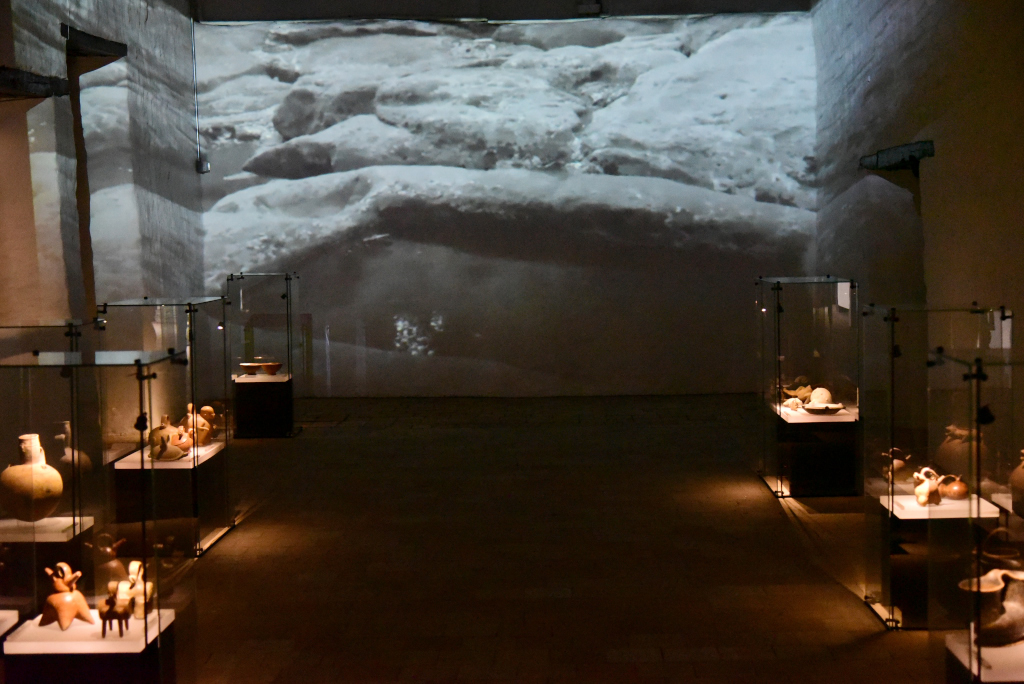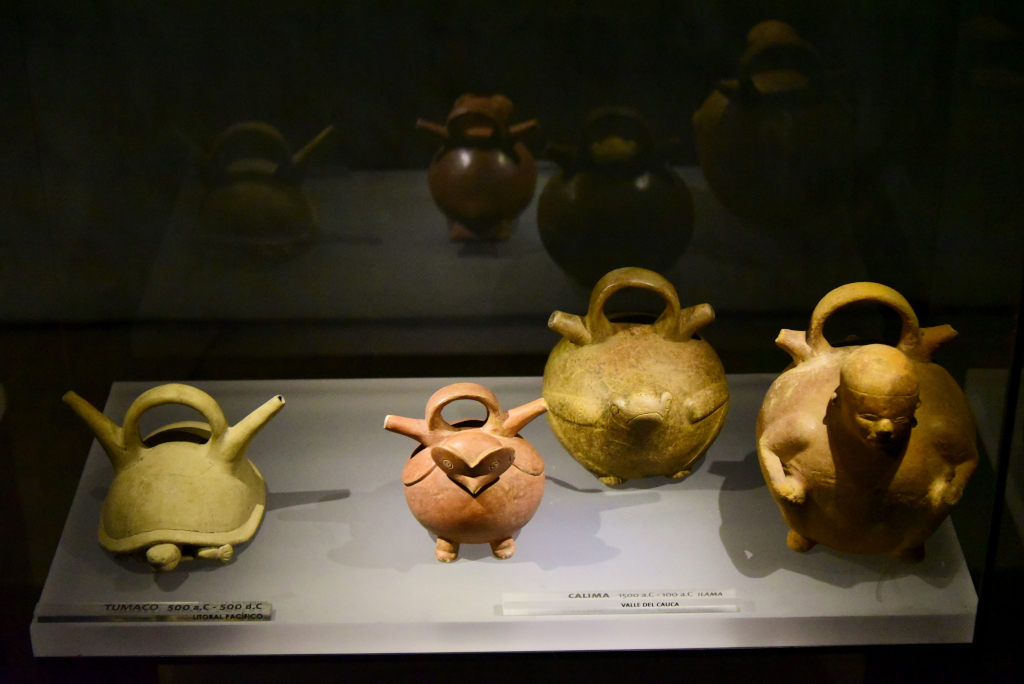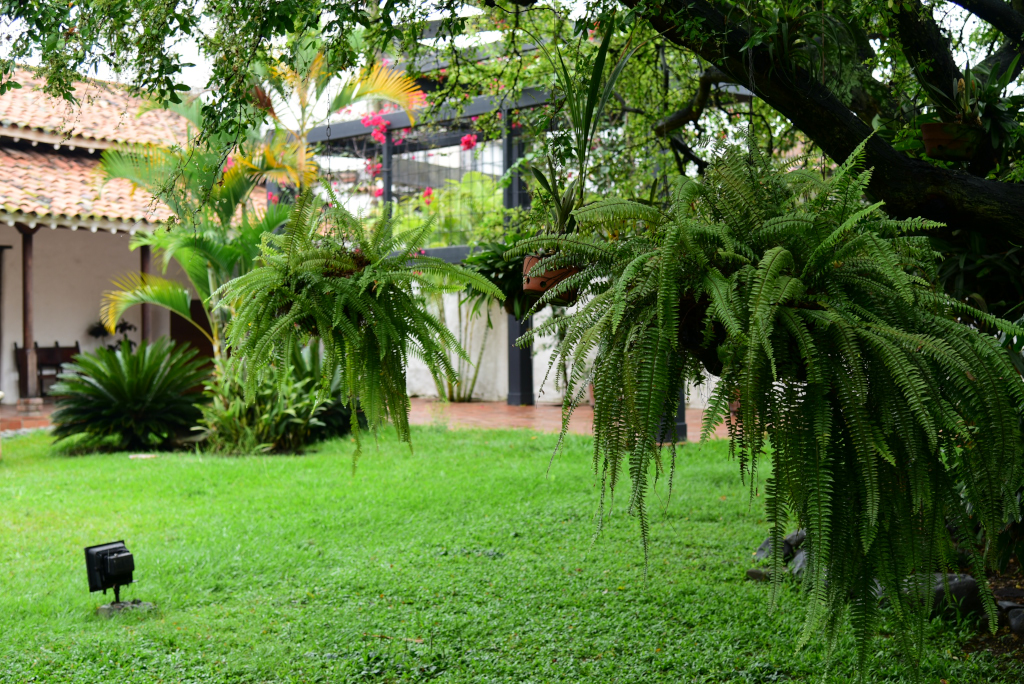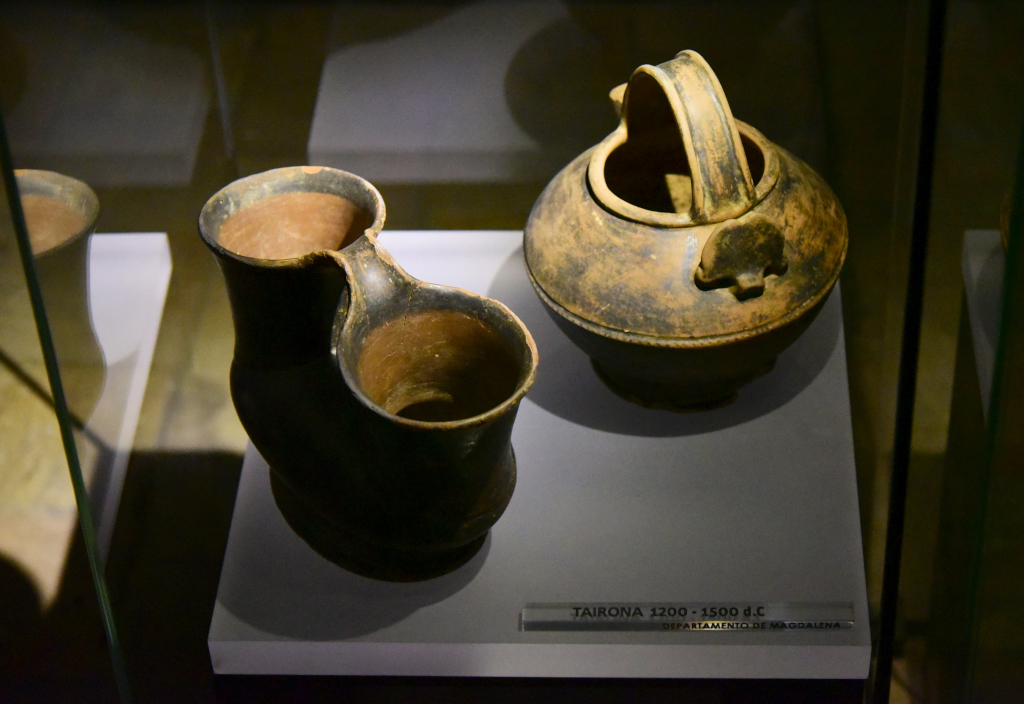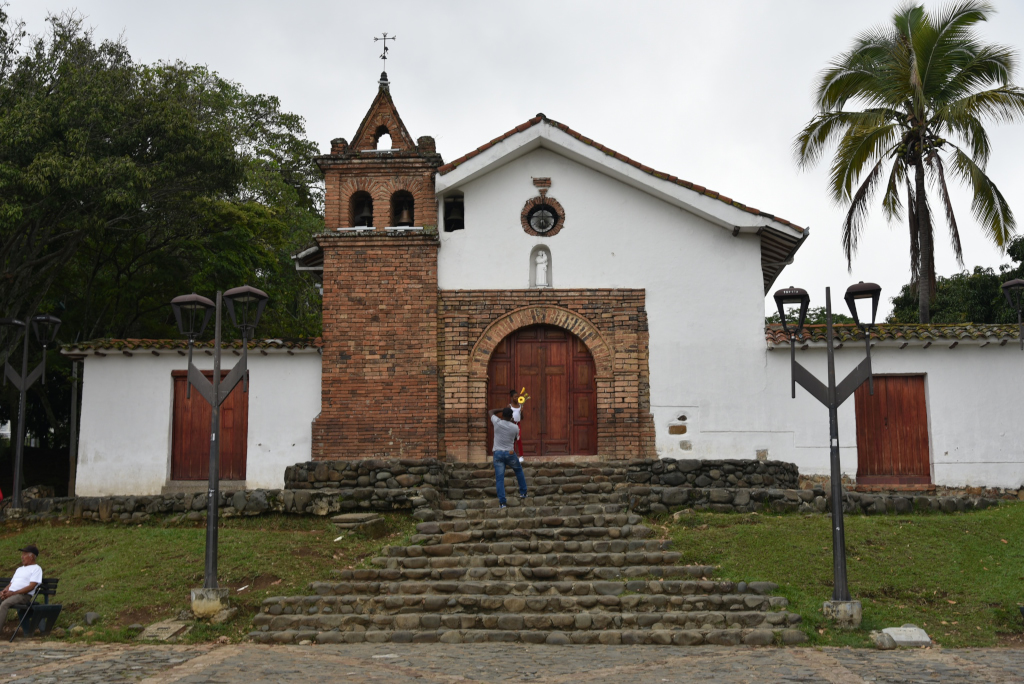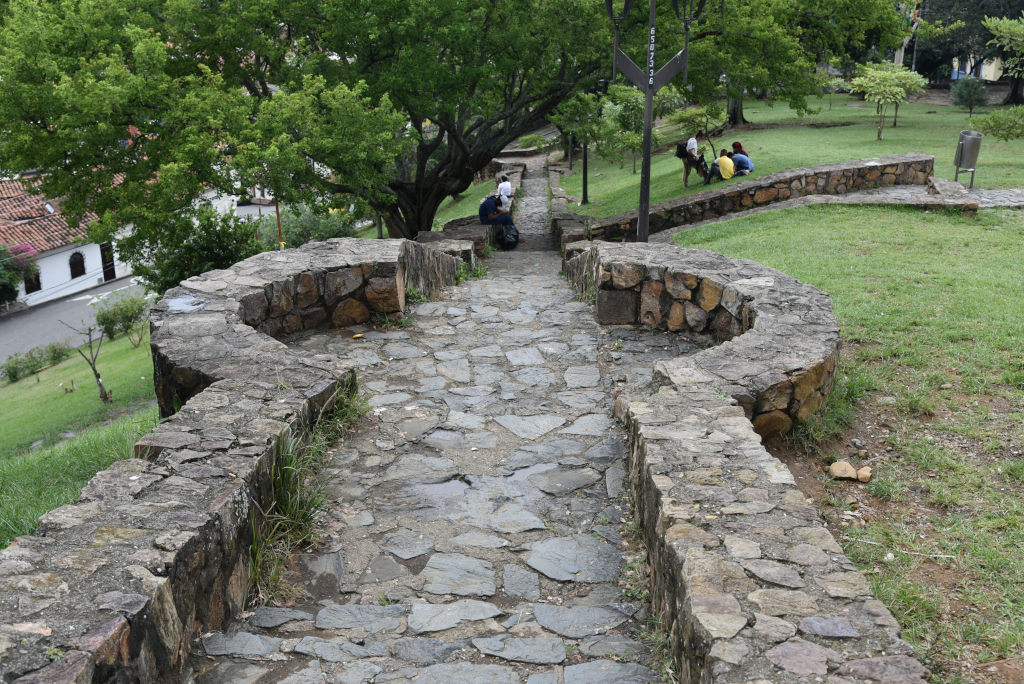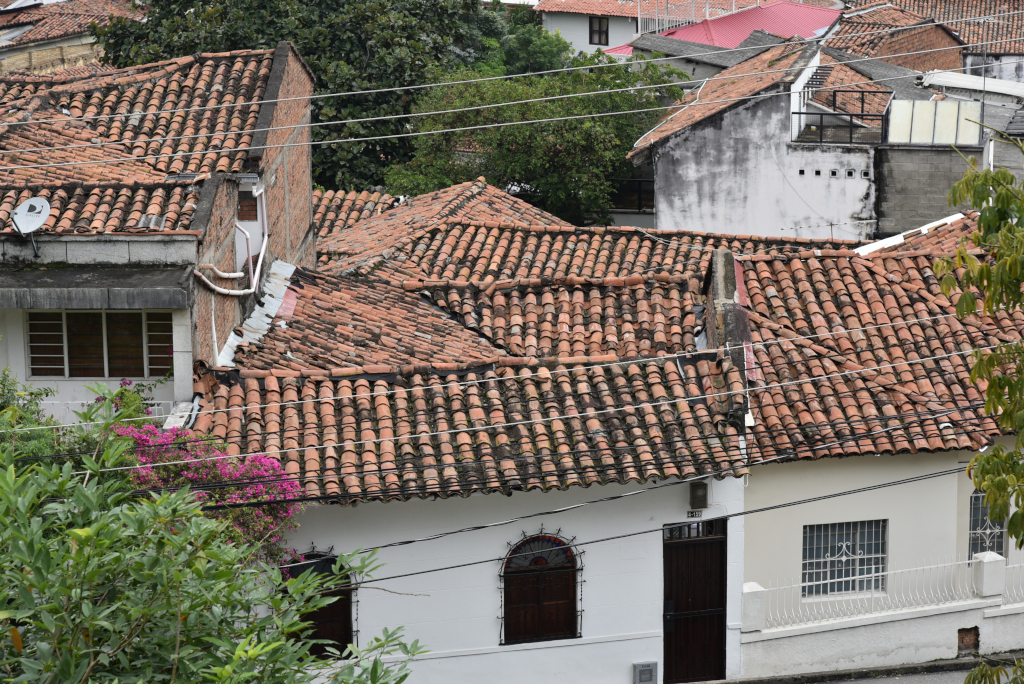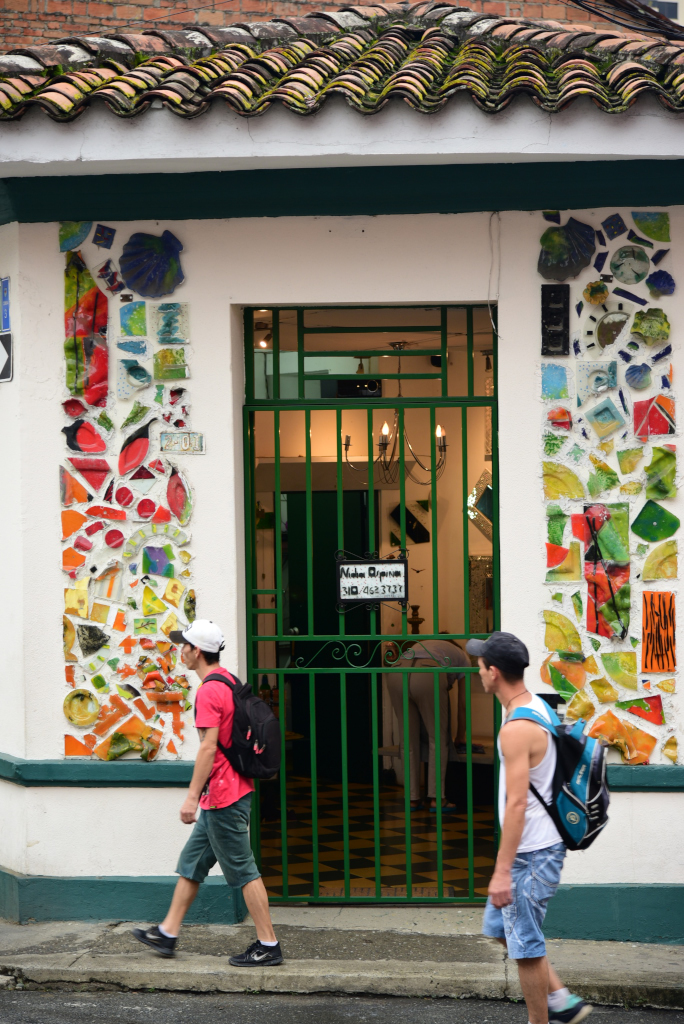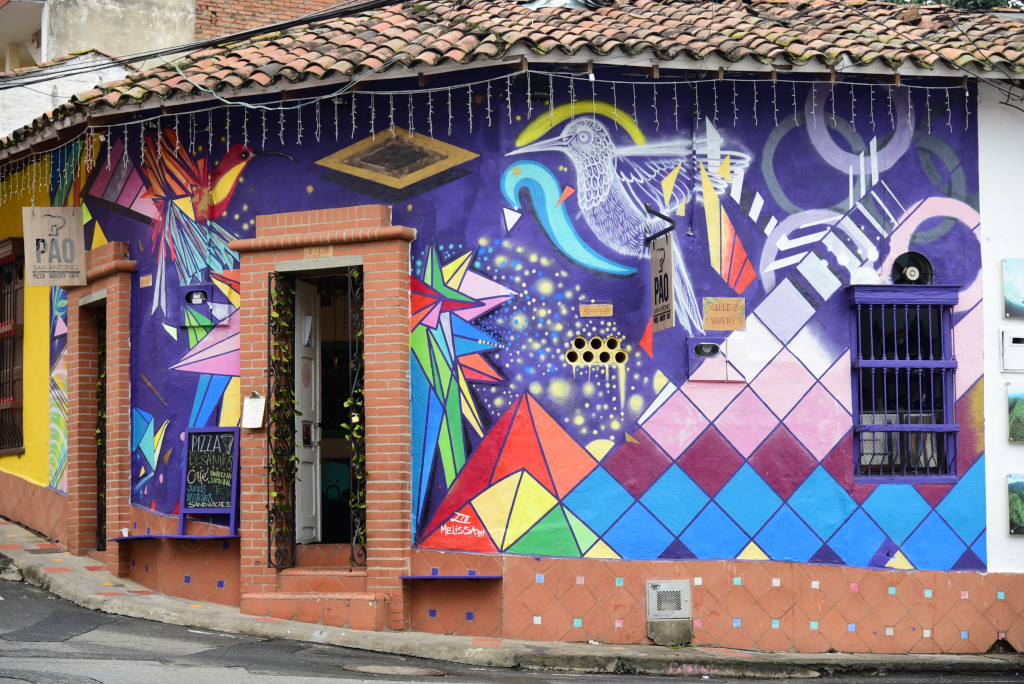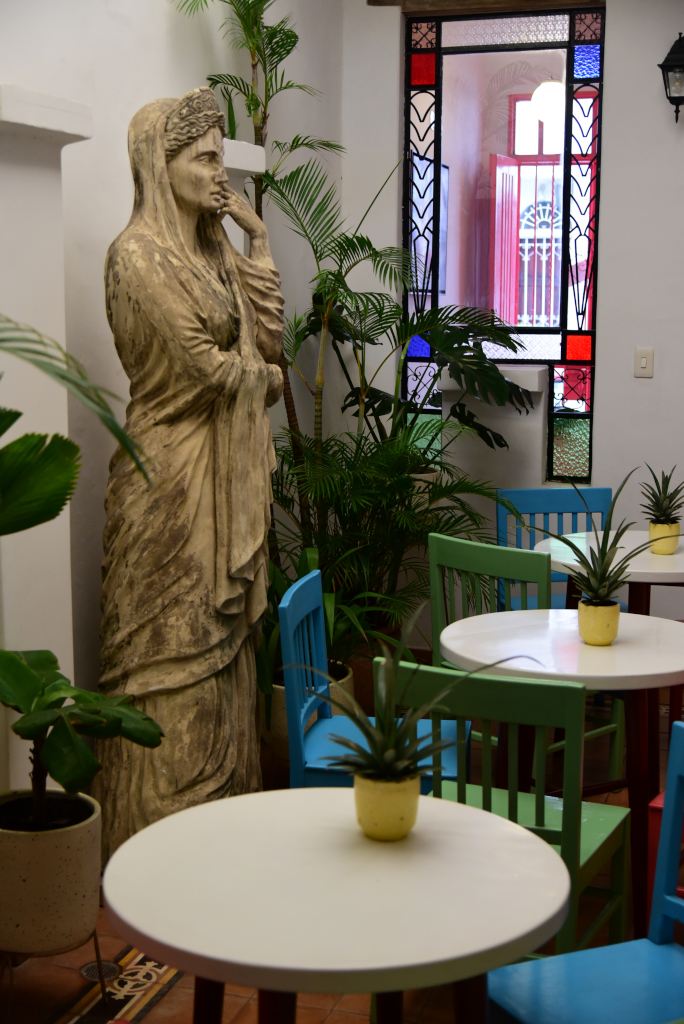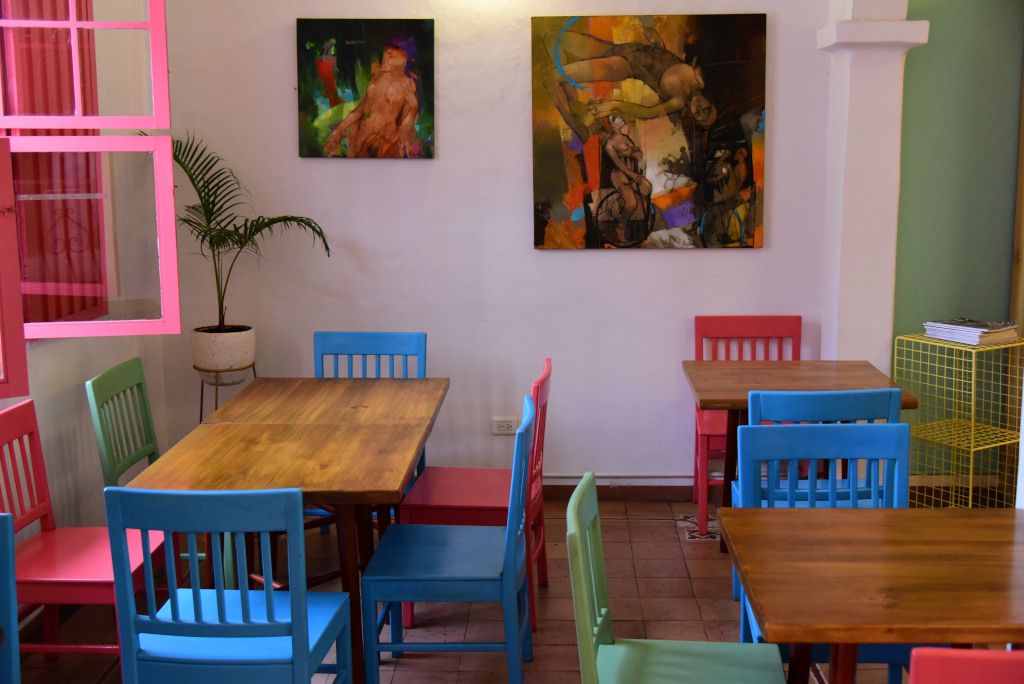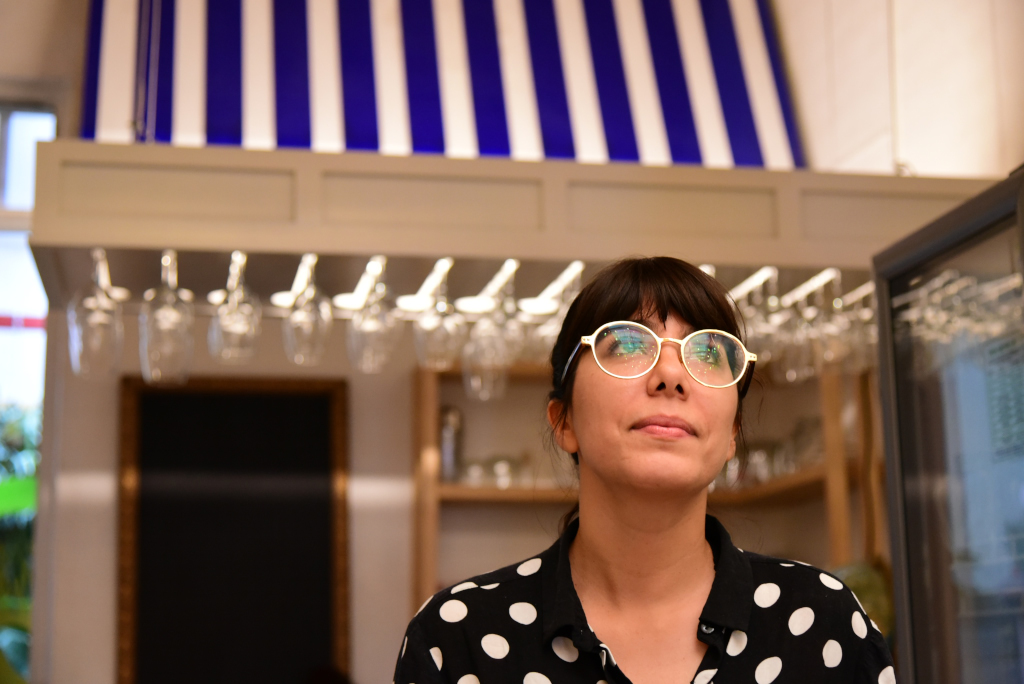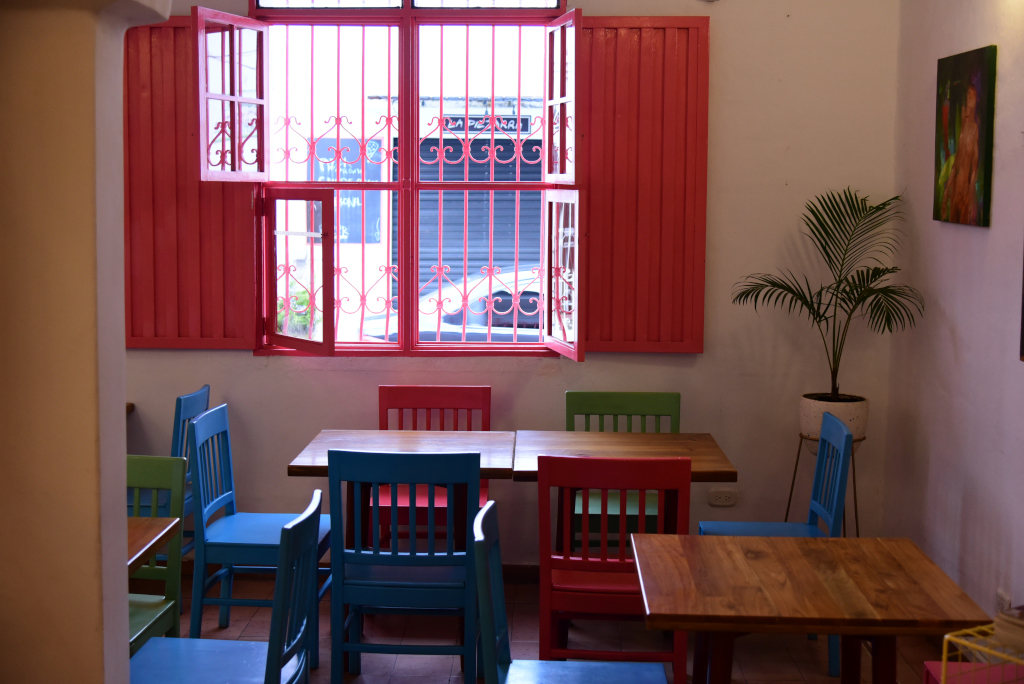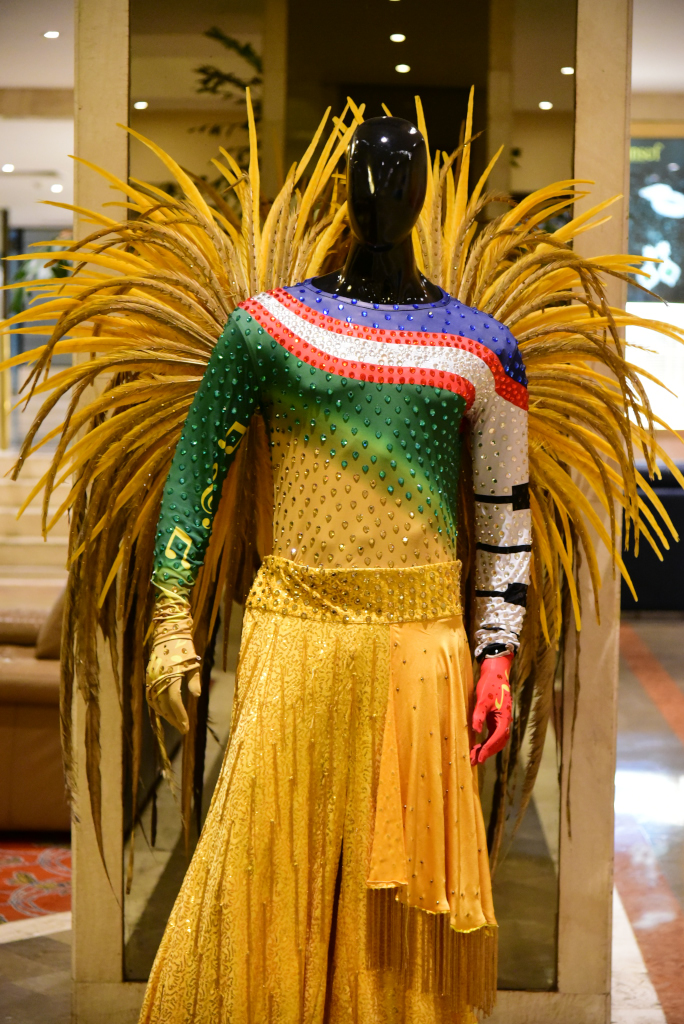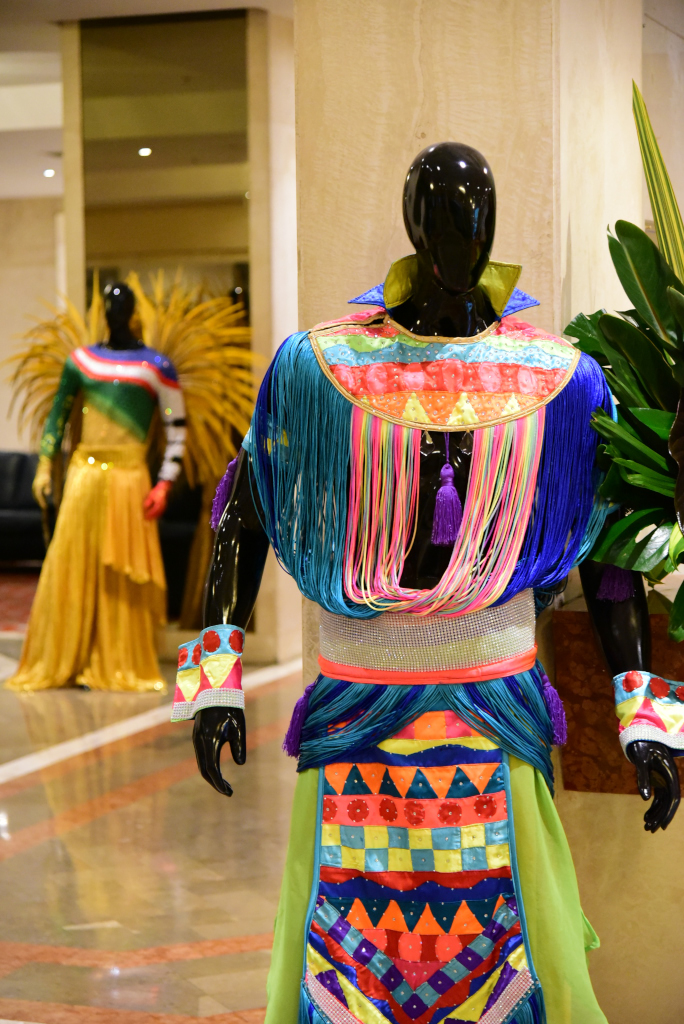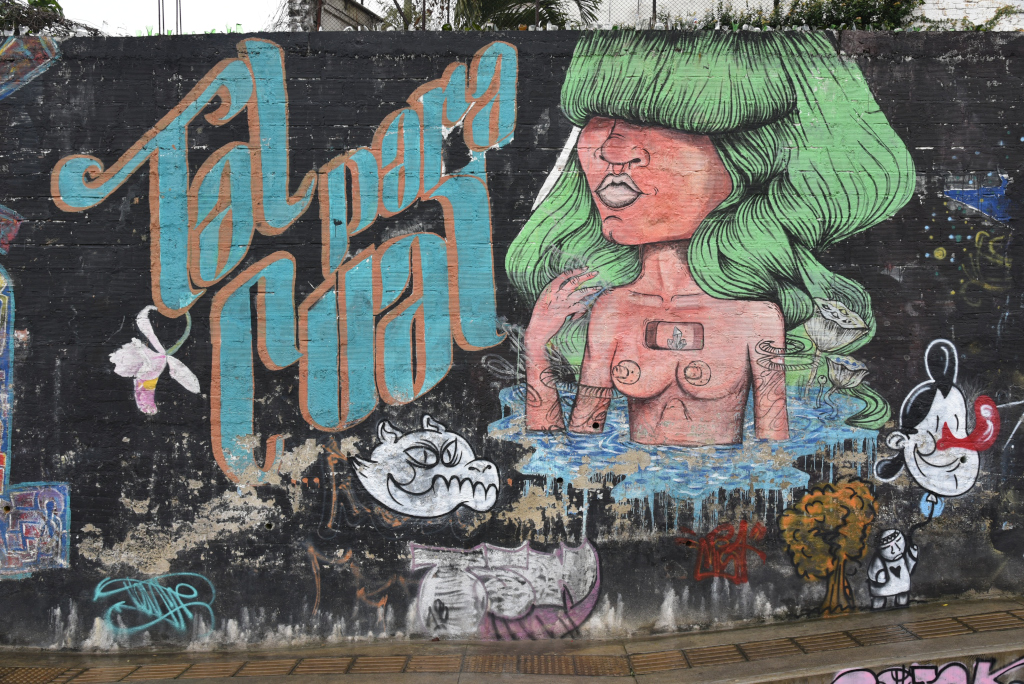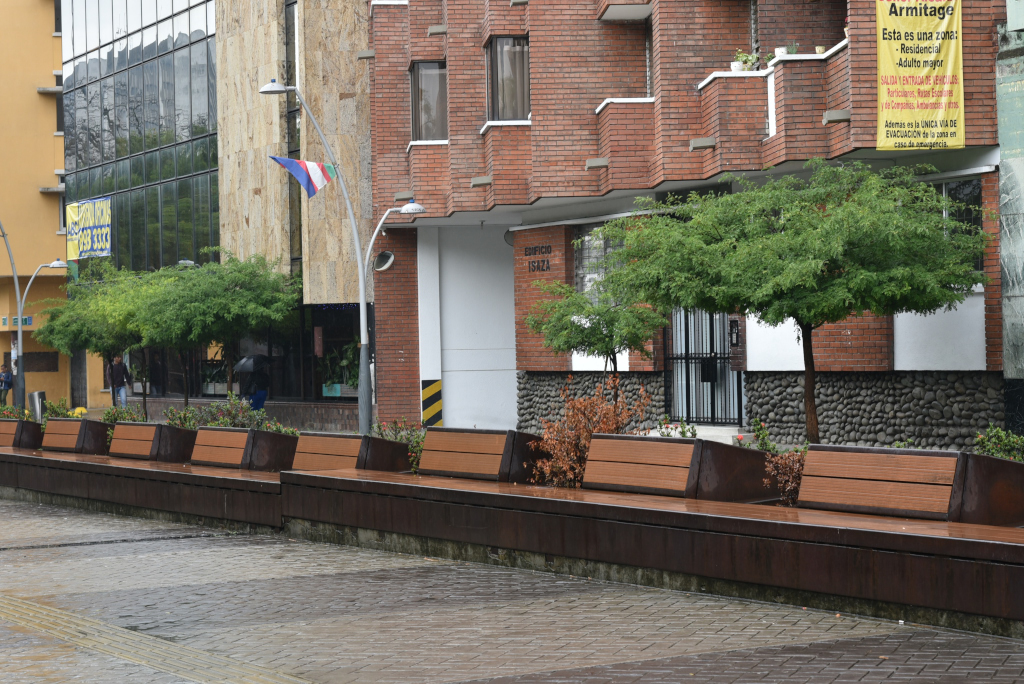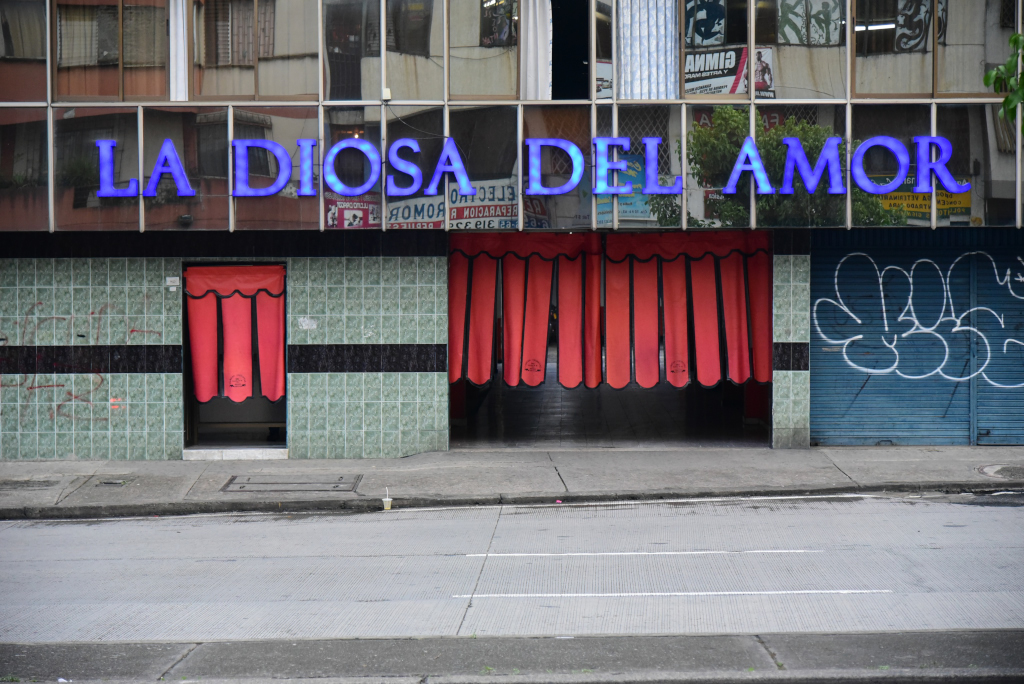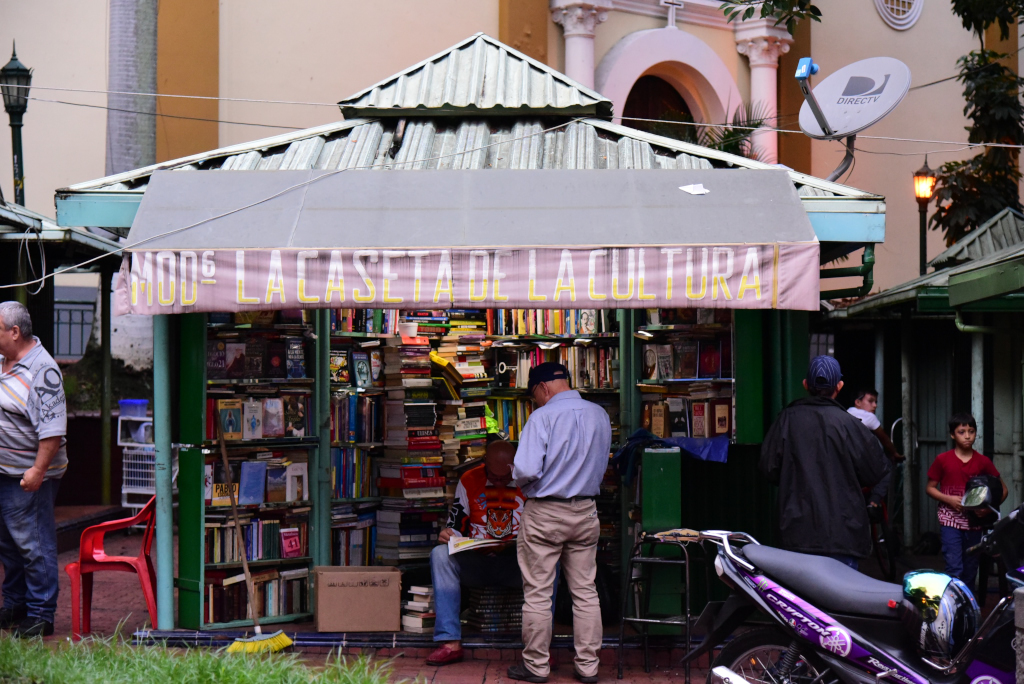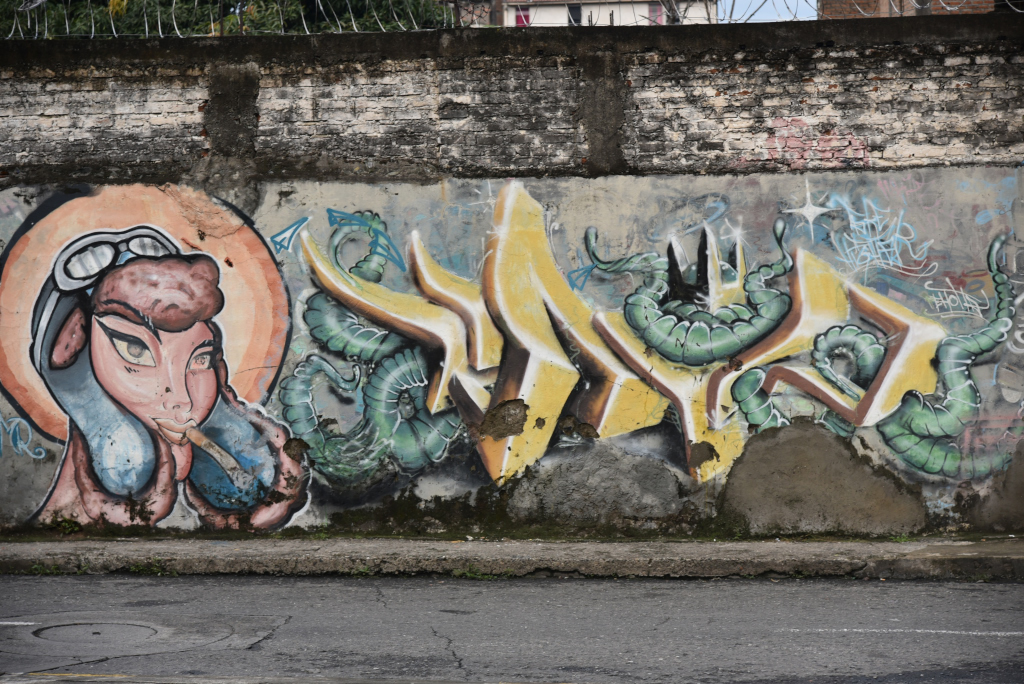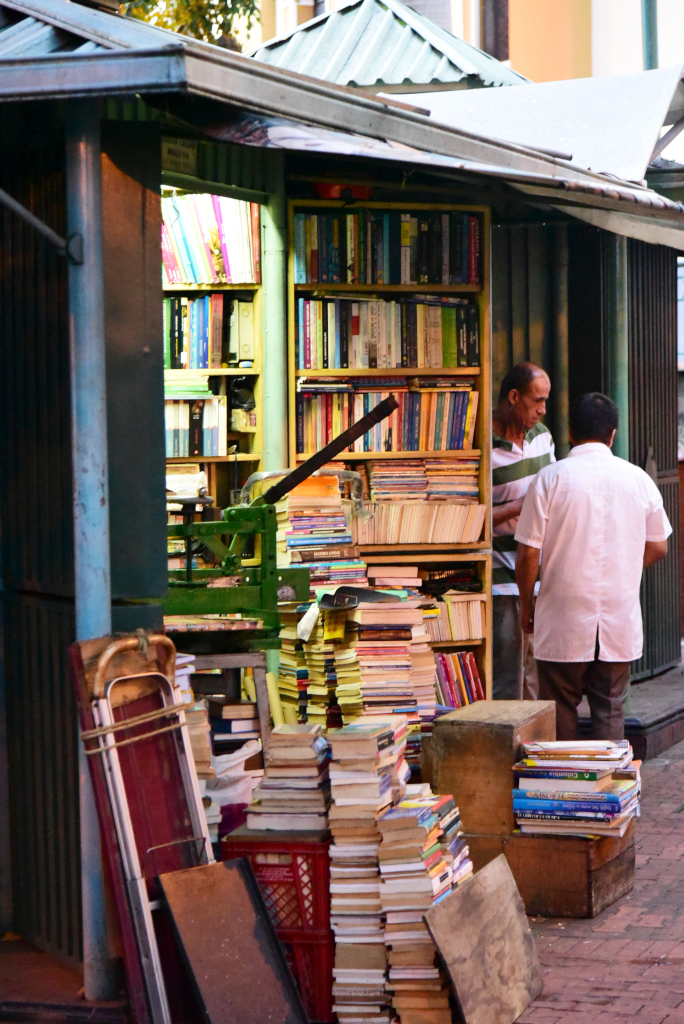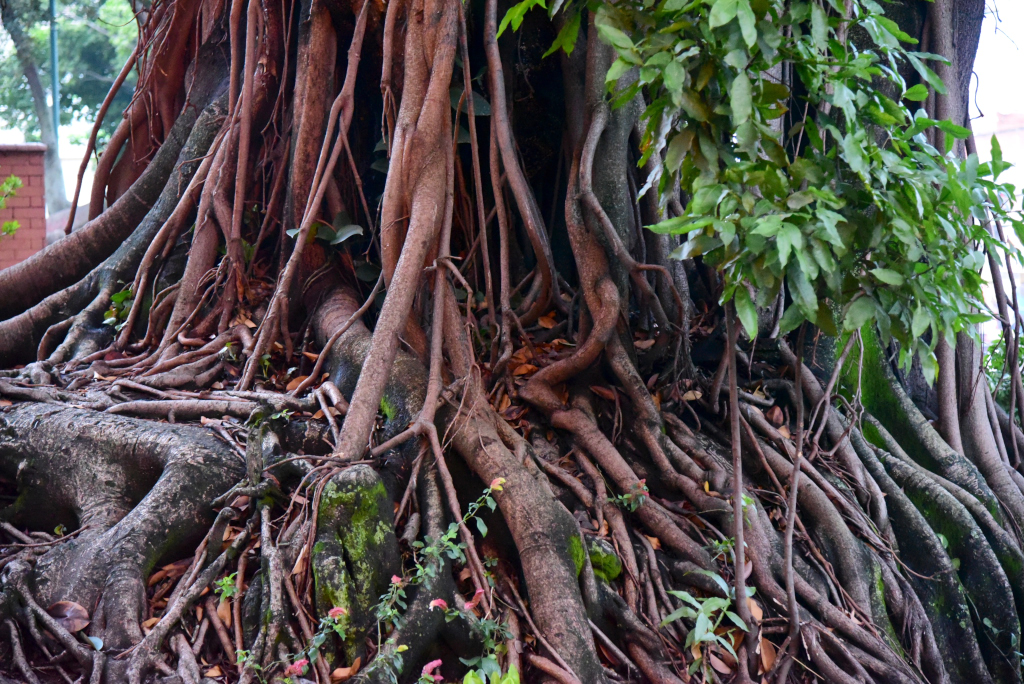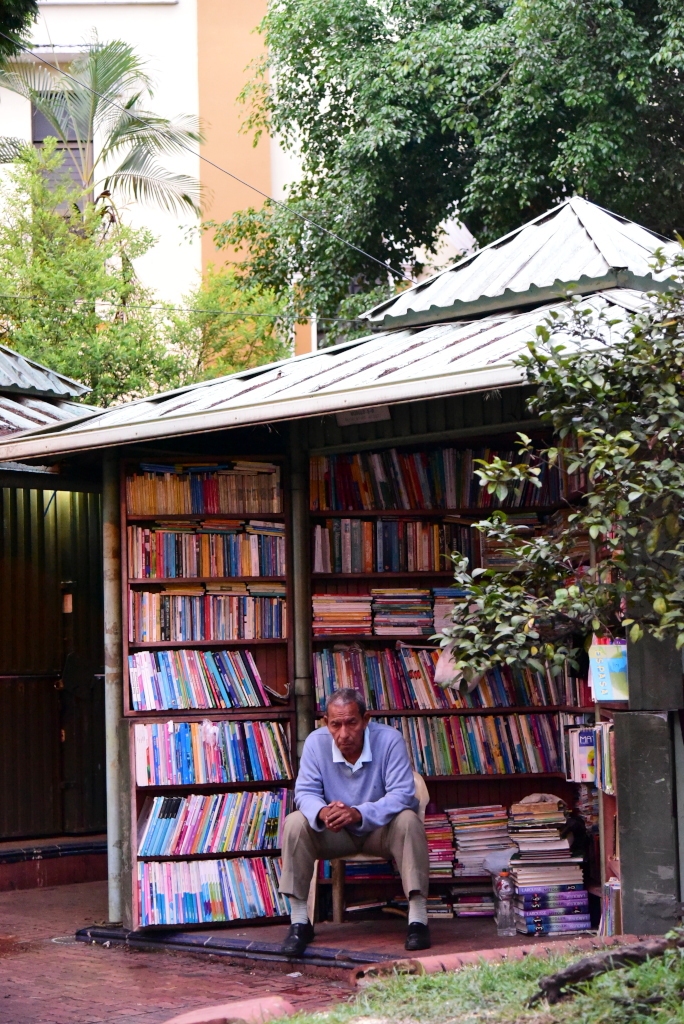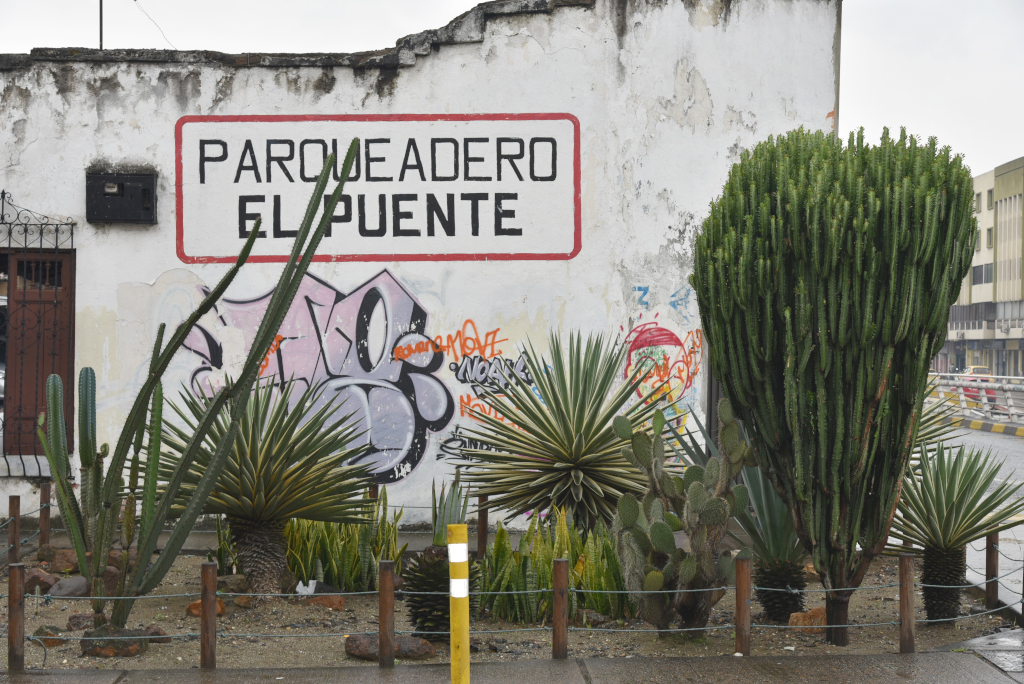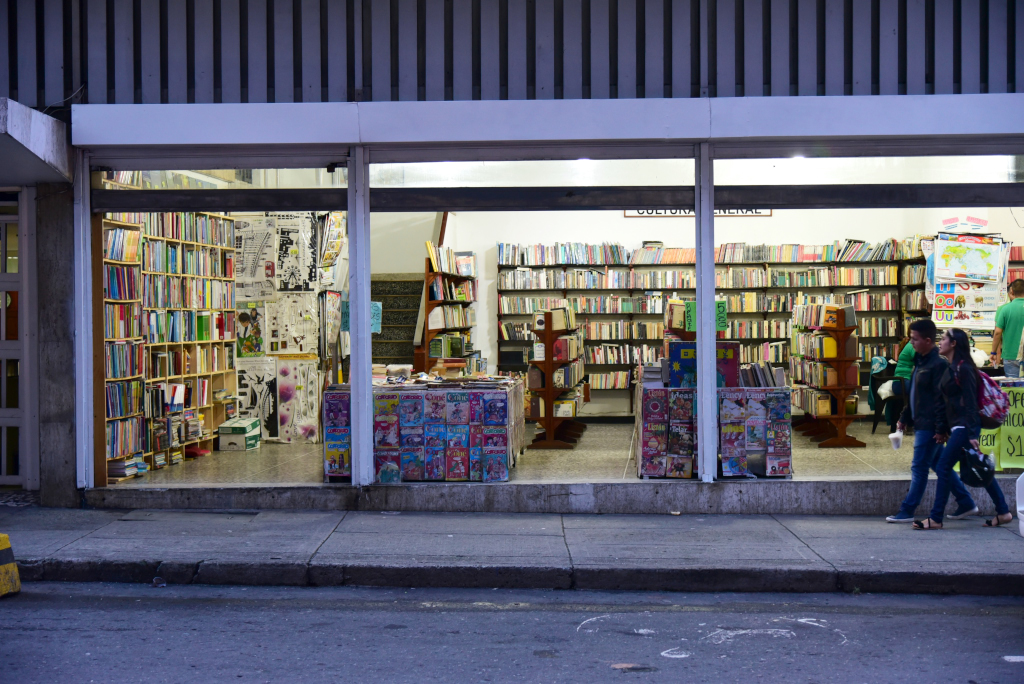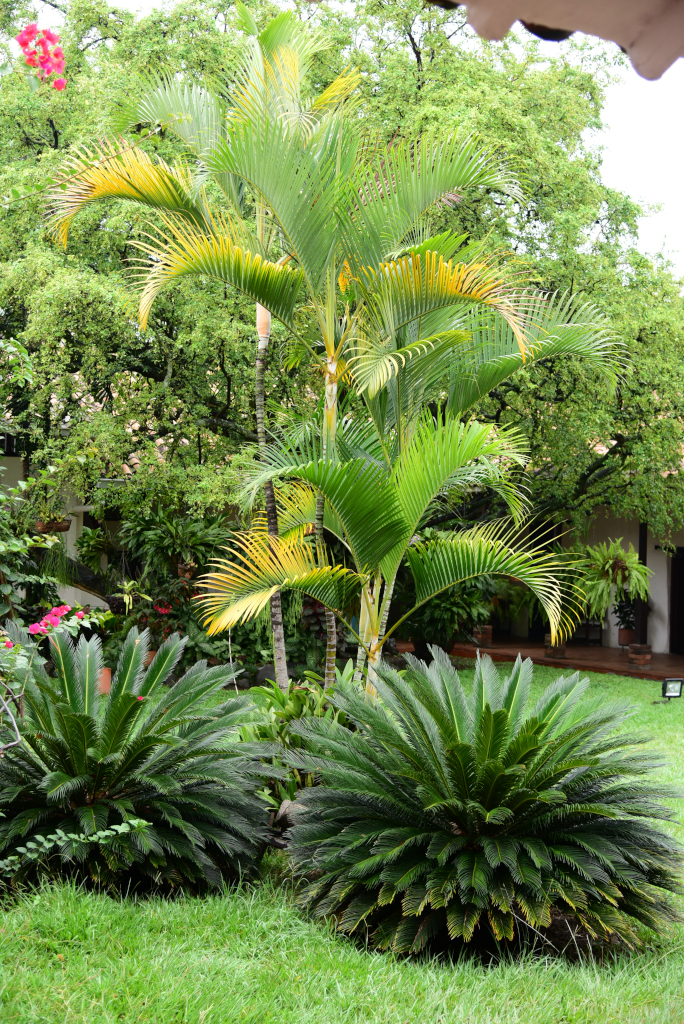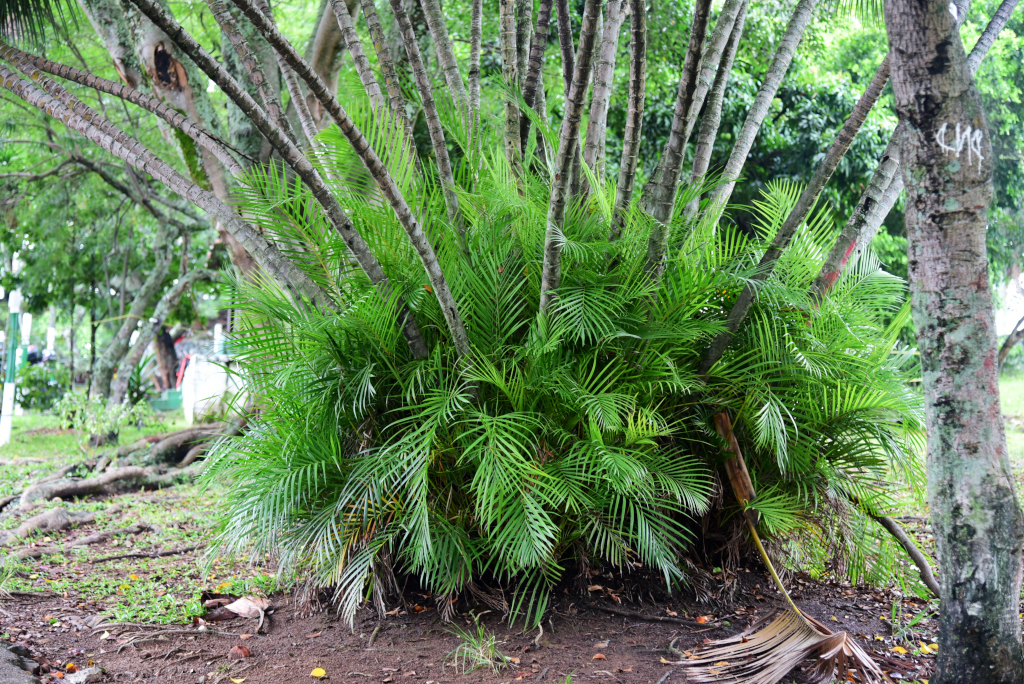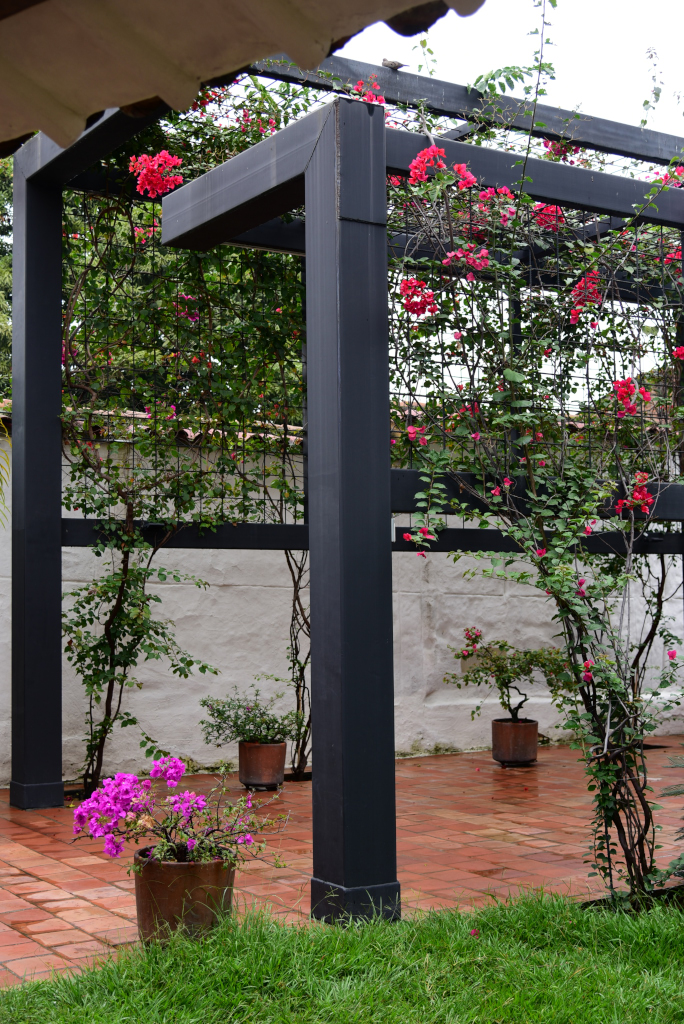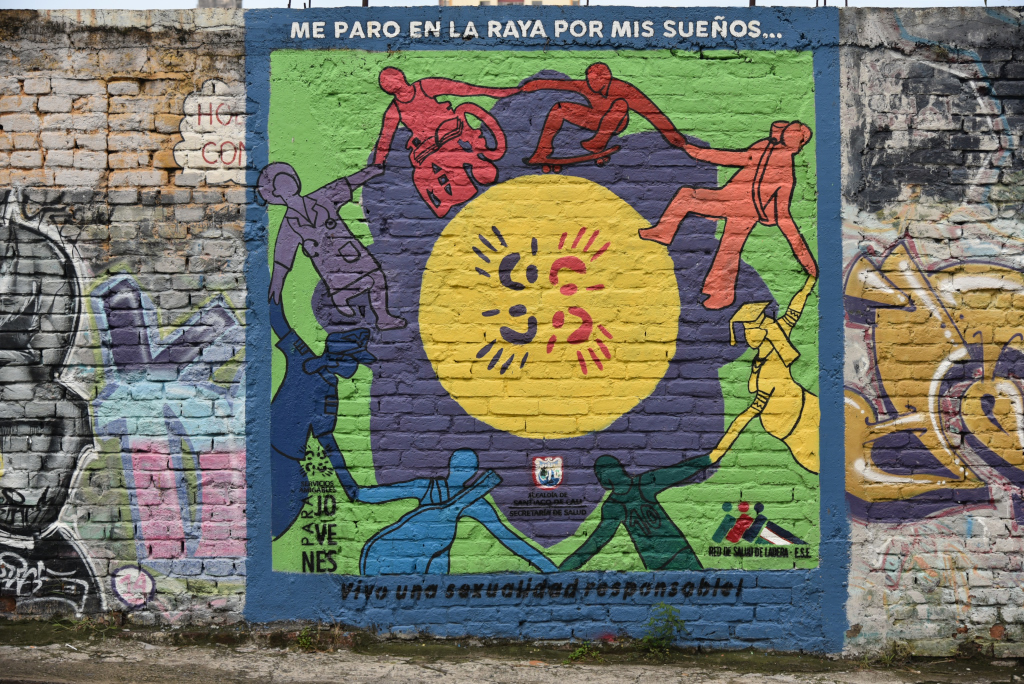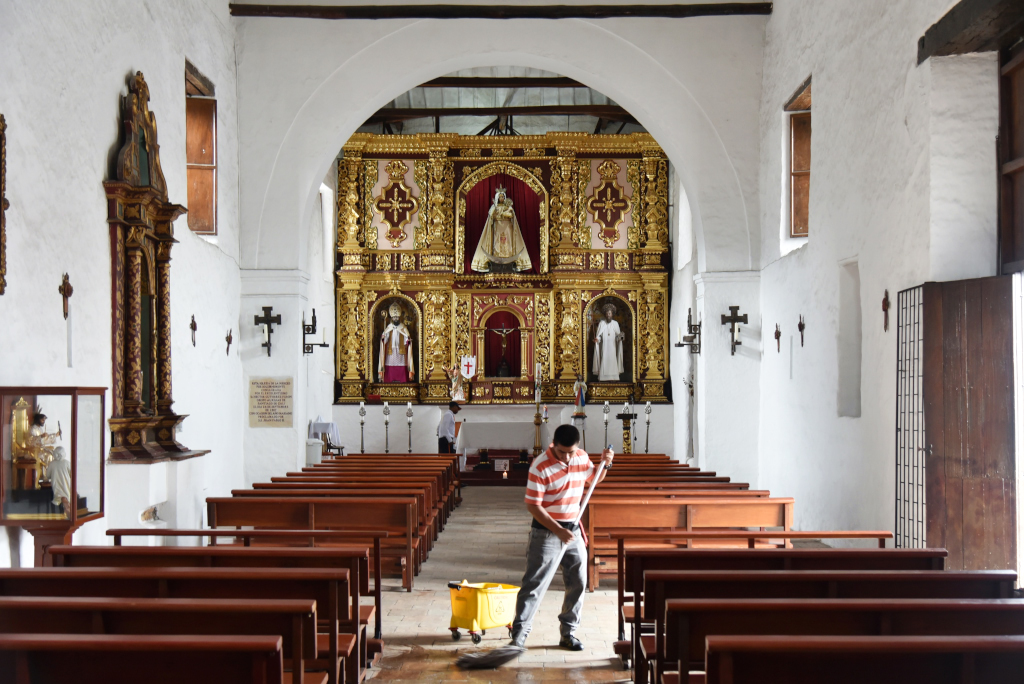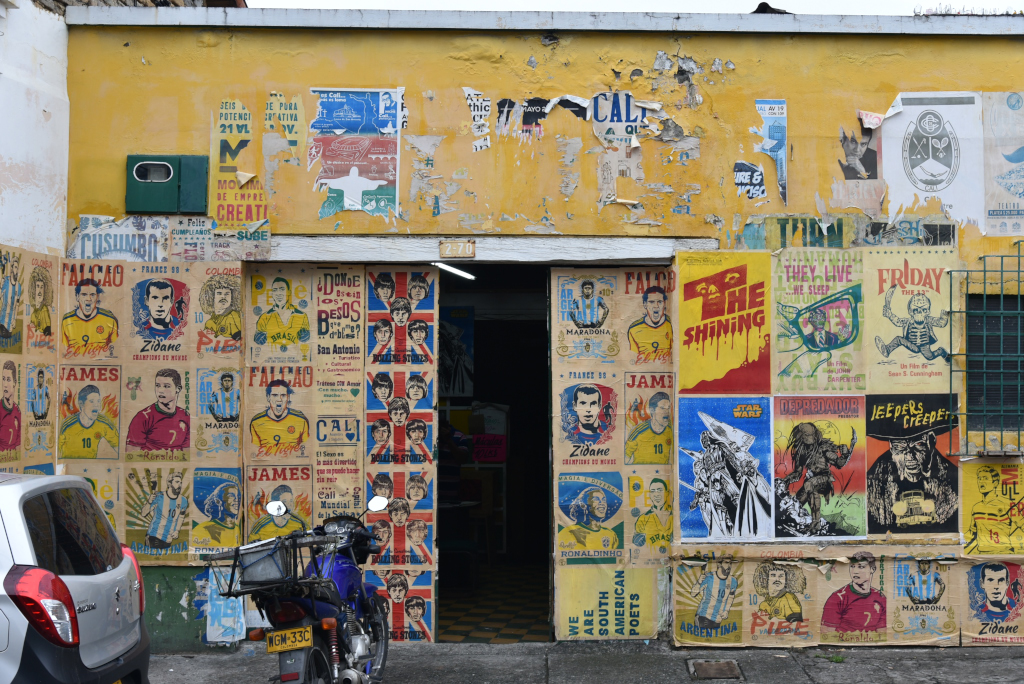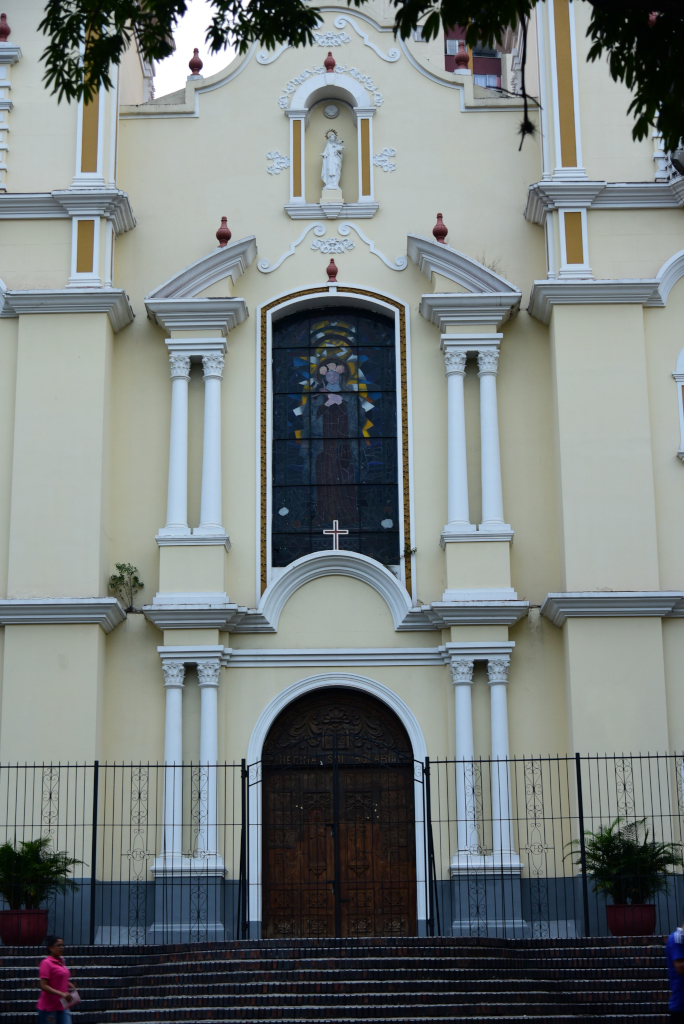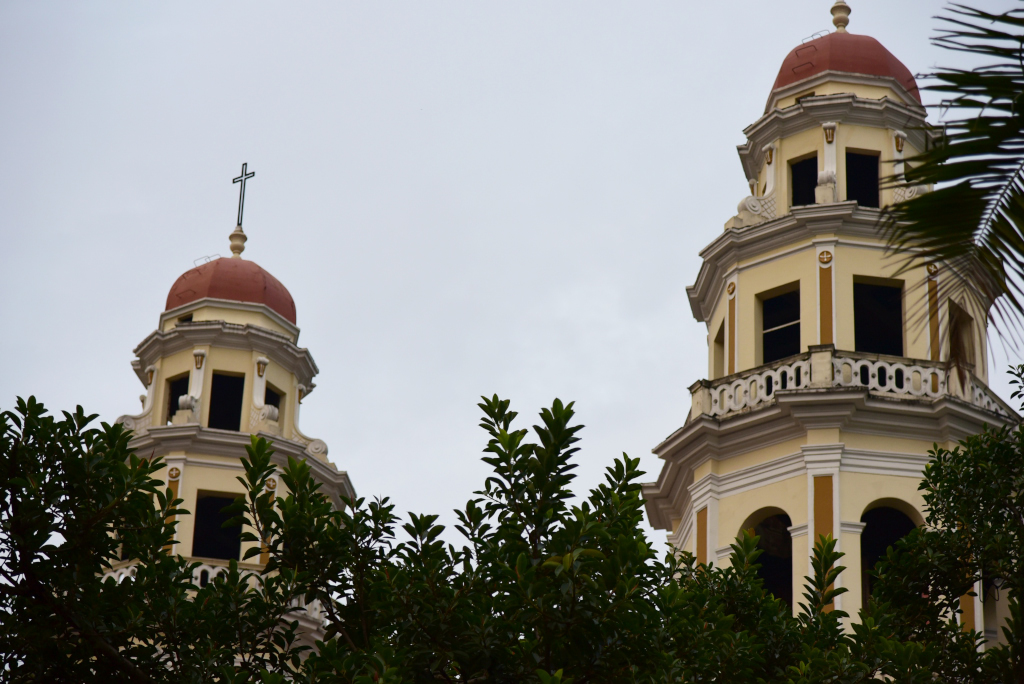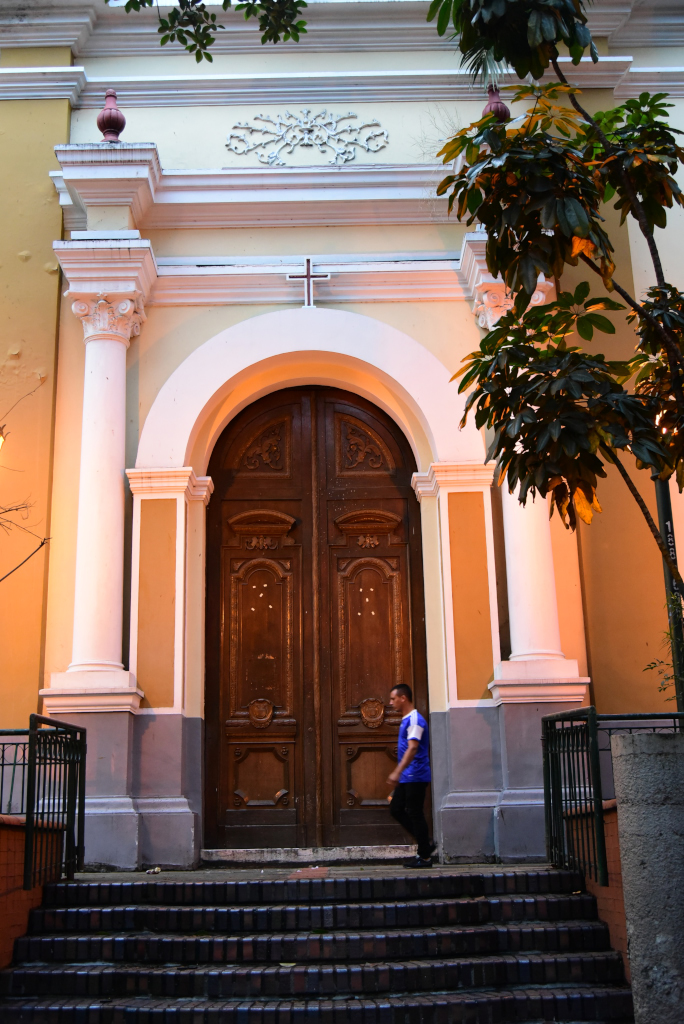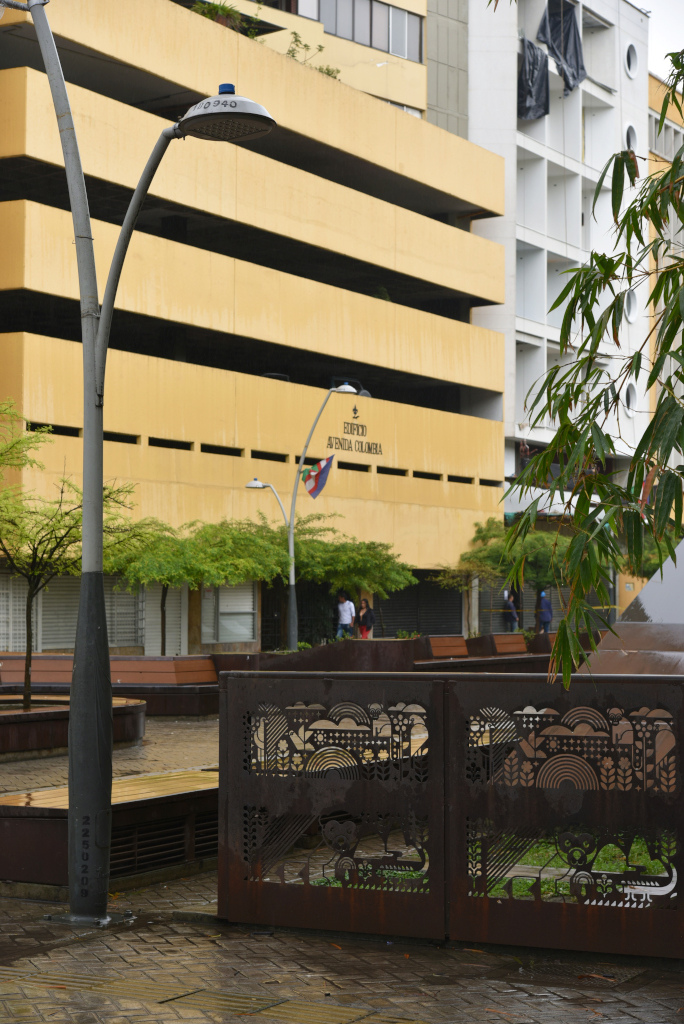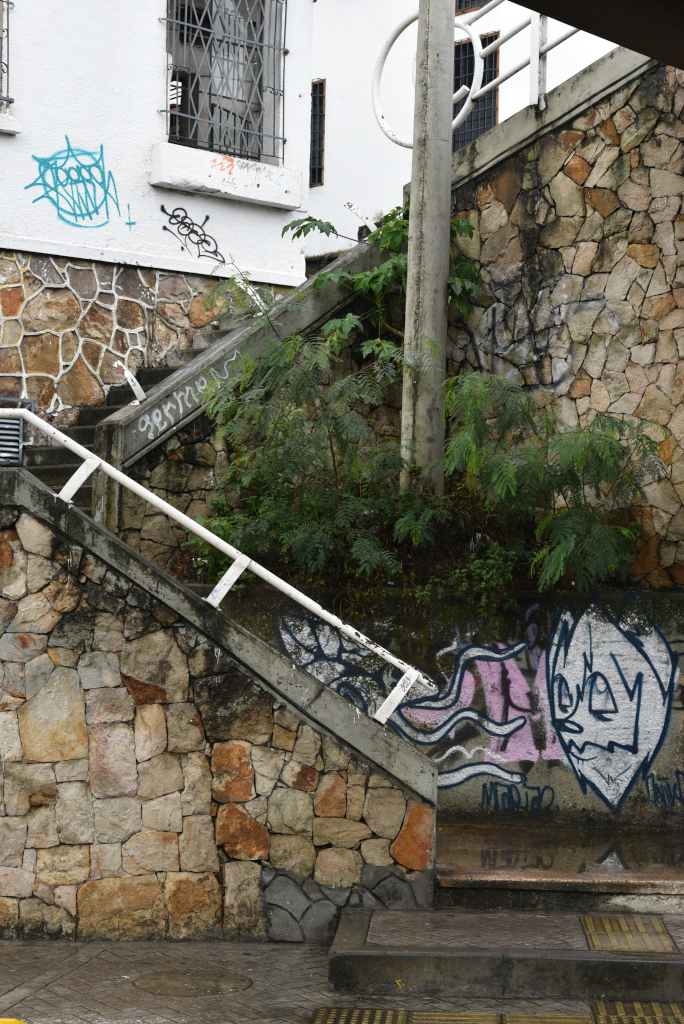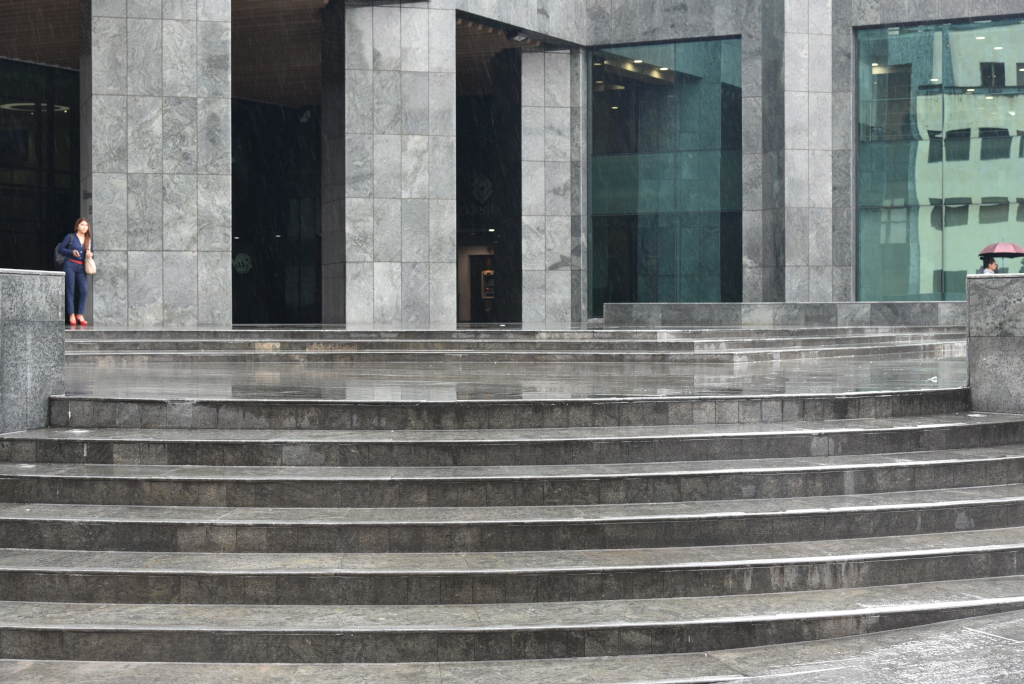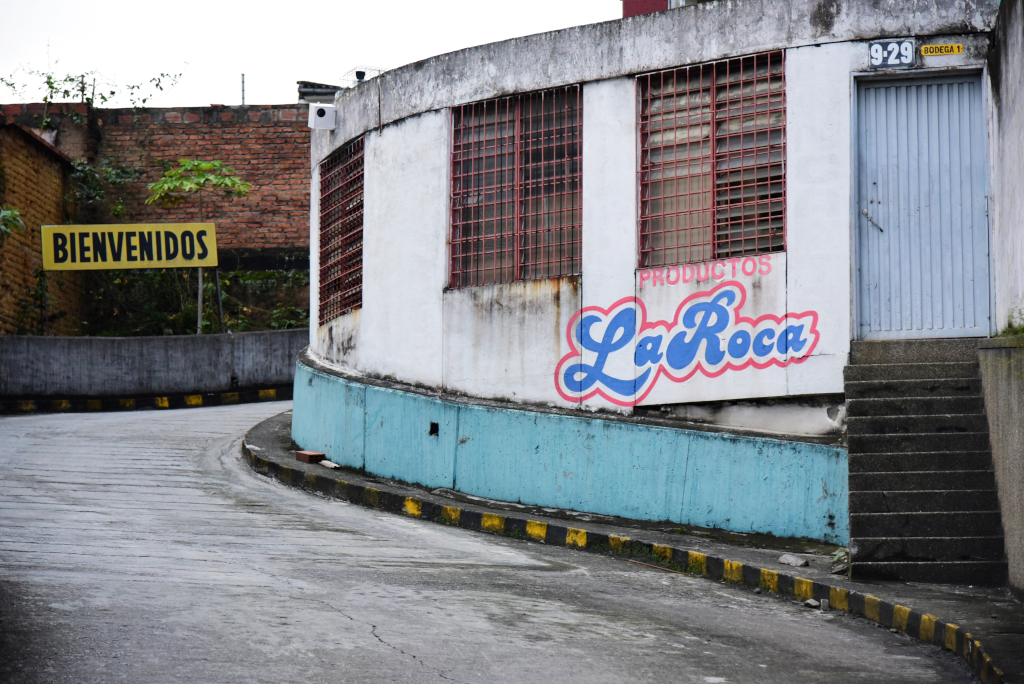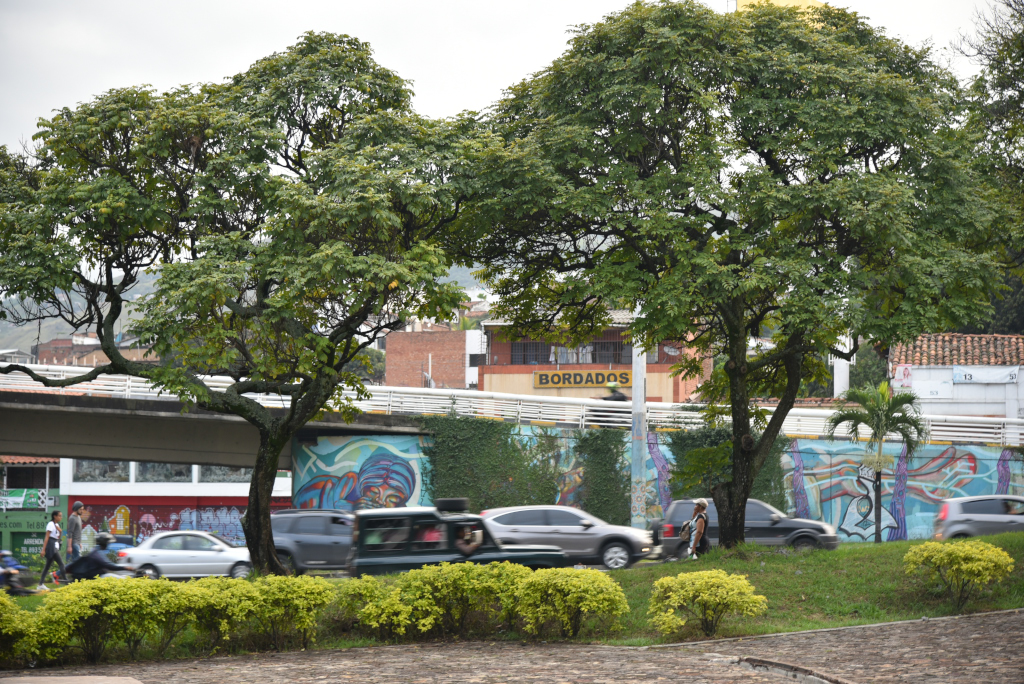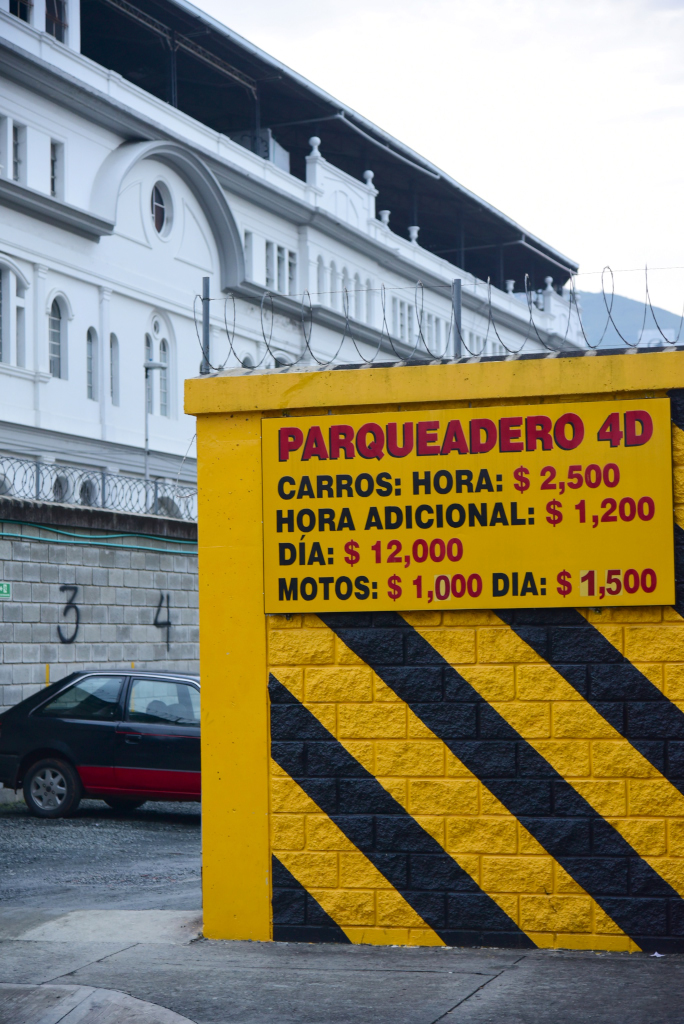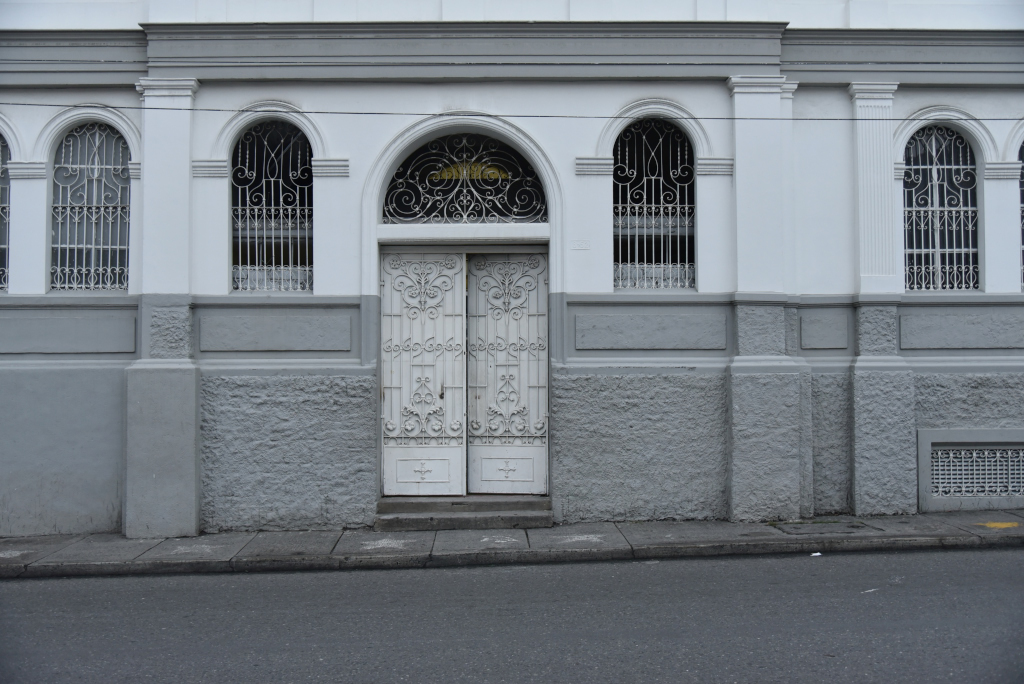April 4, 2018
I am not sure what to do with myself this rainy, dull morning. Breakfast at the bakery down below us, but then I forget my umbrella. Fortunately, they are nice enough to have saved it for me, as it really is raining incessantly here. I make a half-hearted attempt to wander around San Antonio, but things just look grim. I just want to get out of here, and into El Peñon for a decent coffee, as I am not expecting anything to be open in the barrio.
The Le Sucre Boulangerie et Patisserie is one of the first places I encounter, and will do the job admirably. Well, I complain about Colombian baking as usual, but then to what end? The server is very sweet and sympathetic, and in the end it makes no difference: the pain-au-chocolat may not be what it could be, but it is great nonetheless, as is the coffee, and I am not getting wet outside.
My destination is the Museo Arqueólogico La Merced, but I will take a slight detour to get there. Following a meringue at my favorite bakery (the calibre is really dropping here, I admit), I make my way to the narrow bridge of Carrera 4 over Calle 5, and newly invigorated with caffeine, shoot the mural-laden walls surrounding the thoroughfare to the artfully renovated waterfront passage that leads to Calle 8, then loop back up to Carrera 4. The overgrown greenery lends a mysterious charm to the colourful murals that stretch across the stone walls reaching up from the banks of the muddy torrent below.
The passage along the river reflects an apogee of design, what with the column of plant beds alternating with what appear to be continuously tilted ventilation grills. On one side, a bi-directional bike path, and on the other, a cobblestoned pedestrian walkway sheltered on the river side by an ongoing screen of guadua. Metal fencing featuring intricate abstractions is used to delimit portions of the riverside pedestrian area.
The Museo Arqueólogico La Merced is a modest affair set in a spectacular small garden, the dim halls of the old Spanish colonial palace housing individually lit ceramic artifacts of Colombia’s pre-Colombian civilizations. Little explanation is provided for the artifacts, other than the name of the civilization and range of dates applicable to the culture. The relatively bare presentation serves to enhance the impact the work, particularly given the unique aesthetics employed by some of the groups.
While I found the representations of the San Agustín culture archaic, the other cultures of which work is presented seem to reflect more sophisticated expression, in terms of the shapes of bodies, the application of contrasting styles, the counterpoint of detail and abstraction, and strangely anthropomorphic qualities.
A squat amorphous body rests on pudgy legs, crowned by a flattened head with oblique expression. An intent, well-built individual, decorated with arm and leg bands. Grimacing heads have a horrific back story, the use of ceramic heads as offerings an outcome of running out of heads to decapitate for sacrificial purposes. The artifacts of the Calima culture to the north of the area of Cali are particularly compelling, with their squat shapes intended to represent a massiveness of strength, with a counterpoint of fine limbs and other delicate attachments.
Some artifacts feature a plain surface, while others patterns of a roughly geometric nature. Squat water carriers with corpulent bodies and small animal or human heads, with spouts emanating on either side of the top, one intended to allow the entry of water when submerged, and the other the departure of air.
The neighborhood feels drab this afternoon, as not much has changed in terms of lighting. It may not be pouring, but the light is as grey as it will get. Climbing up to the Iglesia de San Antonio reveals some charming views of the neighborhood below, I see that the park surrounding the church is somewhat of a gathering ground for the dispossessed, a few lovers, and ambulatory vendors of hippie jewelry.
Much more interesting is the walk that ensues towards the Intercontinental Hotel, which apparently has an ATM (of none other than my former employer!). All those places that were shuttered the last few days are now very much open, and the impression is incredible. There are very funky, off-beat establishments in this area, to the point that it is quite unclear what their exact purpose is. Gallery? Cafe? Restaurant? Performance space? Accommodation? Private residence? All of the above? None of the above? The amount of colour and visual engagement is universal, however.
La Petite Tartine is a case in point, the simple, Scandinavian style decor housing a French bistrot with reasonable prices, very attractive for the nature of the cuisine. But what makes this space particularly attractive is the gigantic figure of what should be the goddess Lydia, although I suspect it may be Hera. Then the sound system is playing Iron Butterfly’s ‘In-A-Gadda-Da-Vida’, another curve ball. It turns out the owner is utterly enthralled by music from the late 60s – and why not! I promise to return with some of my own rag-tag collection of music from that time…
Passing through the Intercontinental hotel, looking for a cajero, I see mannequins placed throughout the lobby wearing brilliantly coloured costumes that evoke a carnevalesque sensibility, with sprays of feathers, quilting, sequins, and rainbows of ribbon strands. The costumes apparently belong to a famous salsa dancer by the name of Camilo Zamora who stars at the Feria de Cali in December, as many other signature events involving salsa music.
At my favorite junction thus far in Cali, the bridge of Carrera 4 over Calle 5, I am increasingly fascinated by the food being prepared by the vendors working the grills on either side of the walkway. Arepas, sausages, large patacon, potatoes grilled with cheese, and vats of guacamole are featured at one. My feelings about street food in Colombia are no secret, but I am curious, particularly since the sausage offered by the two vendors looks different.
One assures me that they are house-made, hence they are different. Yes, everything they prepare is home-made. The allure increases, hence I order a sausage with the potato grilled in cheese, doused in guacamole. And what I am served is sublime, the sausage far better than anything I have tried in the country, nor even imagined in terms of quality. This is incredibly good, as is the guacamole. I look around me at the crowd gathered appreciatively, amazed at what they have been privy to all along.
With a few hours to kill before it becomes altogether dark, I consider wandering through the small area of La Merced just north of Carrera 10. Expecting very little, I am pleasantly surprised to see large medical institutions and a lot of bookstores. These frumpy, somewhat forgotten blocks of the centre of town are a hub for the literary crowd, block upon block dedicated to the sale of used books. I find it difficult to restrain myself, but then my pack is already weighed down by too much printed matter.
There are small eateries, music stores, specialized retail spaces, hair dressers, talleres, even a supermarket, a true rarity in the city centre, all in a somewhat atmospheric urban context that seems vaguely alluring, vaguely fashionable, and vaguely depressing. The highlight of the area has got to be the towering beige and cream Iglesia Santa Rosa de Lima, with its grid of bookstalls crammed into the small plaza on one side, in the midst of which are sandwiched ancient trees of massive girth, to which the few prospective customers are utterly oblivious, deeply engrossed in anything ranging from the literary classics to some instructional manual, drawn from the voluminous stockpiles housed in each kiosk.
Returning to the hotel, I notice that the Galeria Kaly is now open. The long, narrow space houses an exquisite collection of copies of pre-Colombian pieces, using the apparently extensive collection of originals of the owner’s father. The curator/manager of the space is from Strasbourg, and provides me with a fascinating commentary on the collection which resonates strongly in the manner of the similar work I saw earlier on today at the archaeology museum. Having completed a doctorate in pre-Colombian archaeology, the production and sale of copies of artifacts in a researched manner seemed like a suitable career to pursue.
The earliest work produced by the indigenous people in Colombia was monochromatic in nature, with no paint applied, the incorporation of paint appearing later on. But even without paint, pieces feature a degree of engraving and finishing that created a textured look, achieving a tonality akin to paint.
The tools used are in and of themselves a fascinating subject in that there were evidently tools employed that originated in very different cultural zones. Likewise, there are representations that draw directly from cultures in the Americas far removed from those in Colombia, a testimony to the degree of trade that existed from earliest times.
The pieces represent originals that were not only decorative in nature, but intended to be used to collect water, as woodwinds, offering vessels, or for preparing coca. The water-collecting vessels typically feature two spouts, one to let in water when the vessel is submerged underwater, and the other to release air as the water enters. The small, squat figurines were ubiquitous, intended as guardian spirits, while the often grimacing ceramic heads were intended as offerings when the people ran out of real heads to chop off and use as sacrificial offerings.
The Calima culture is possibly the oldest from the region, originating from an area just north of Cali, but there were also various periods to that and other cultures. Similarly, there were also various locales of a particular culture, and the nature of the work in those would have been different as well.
I love the work that they have produced, never mind the culture precepts that it has been drawn from and the degree of curation involved. But carrying fragile ceramics in any state back home is enough to set my already normally paranoid mind afire. I consider the possibility of buying some of the work, leaving it at the hotel, going to Buenaventura for a few days, then returning to Cali only to fly back to Bogota, minimizing the risk of potential damage. Yes, that could work …

